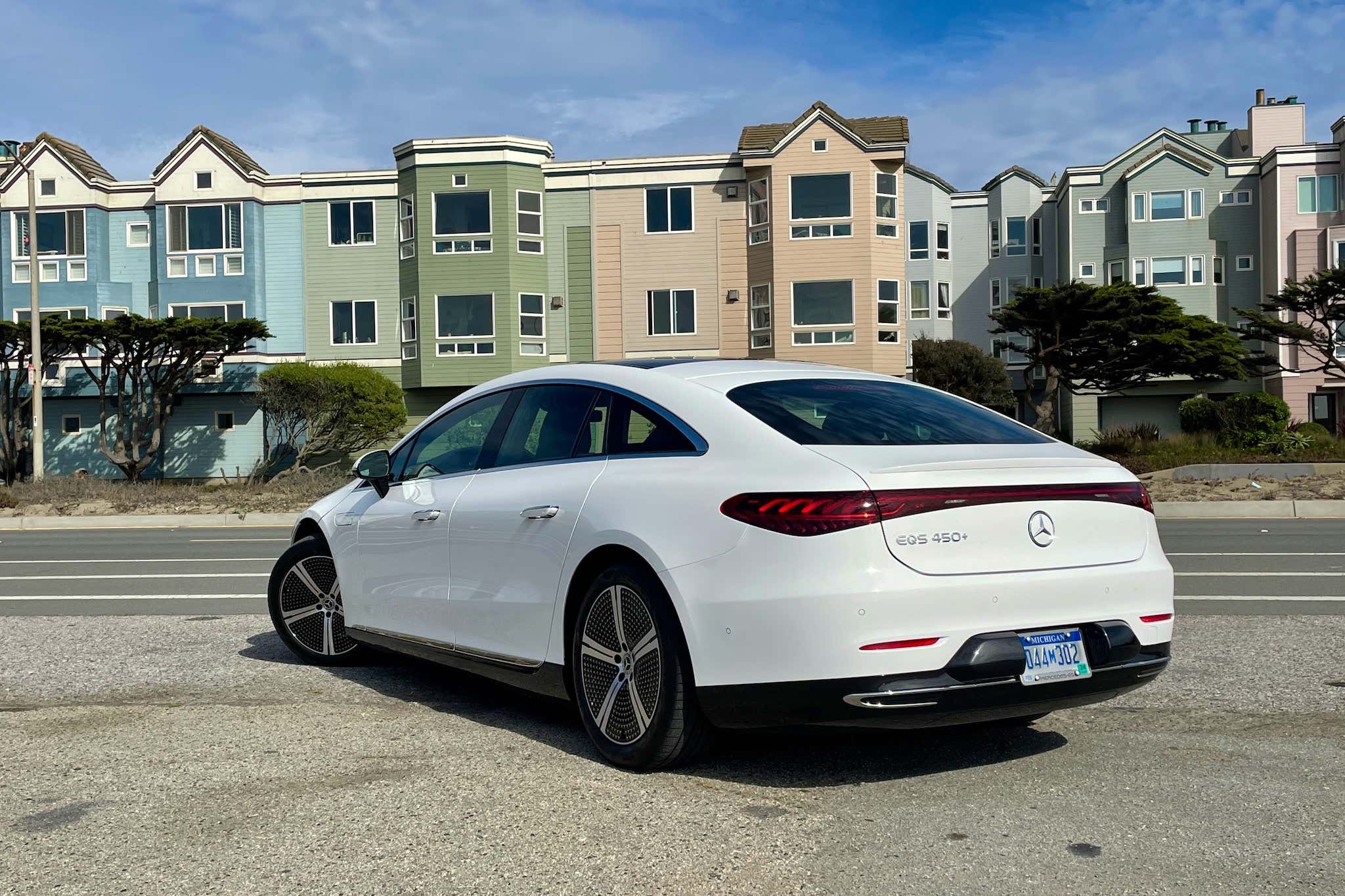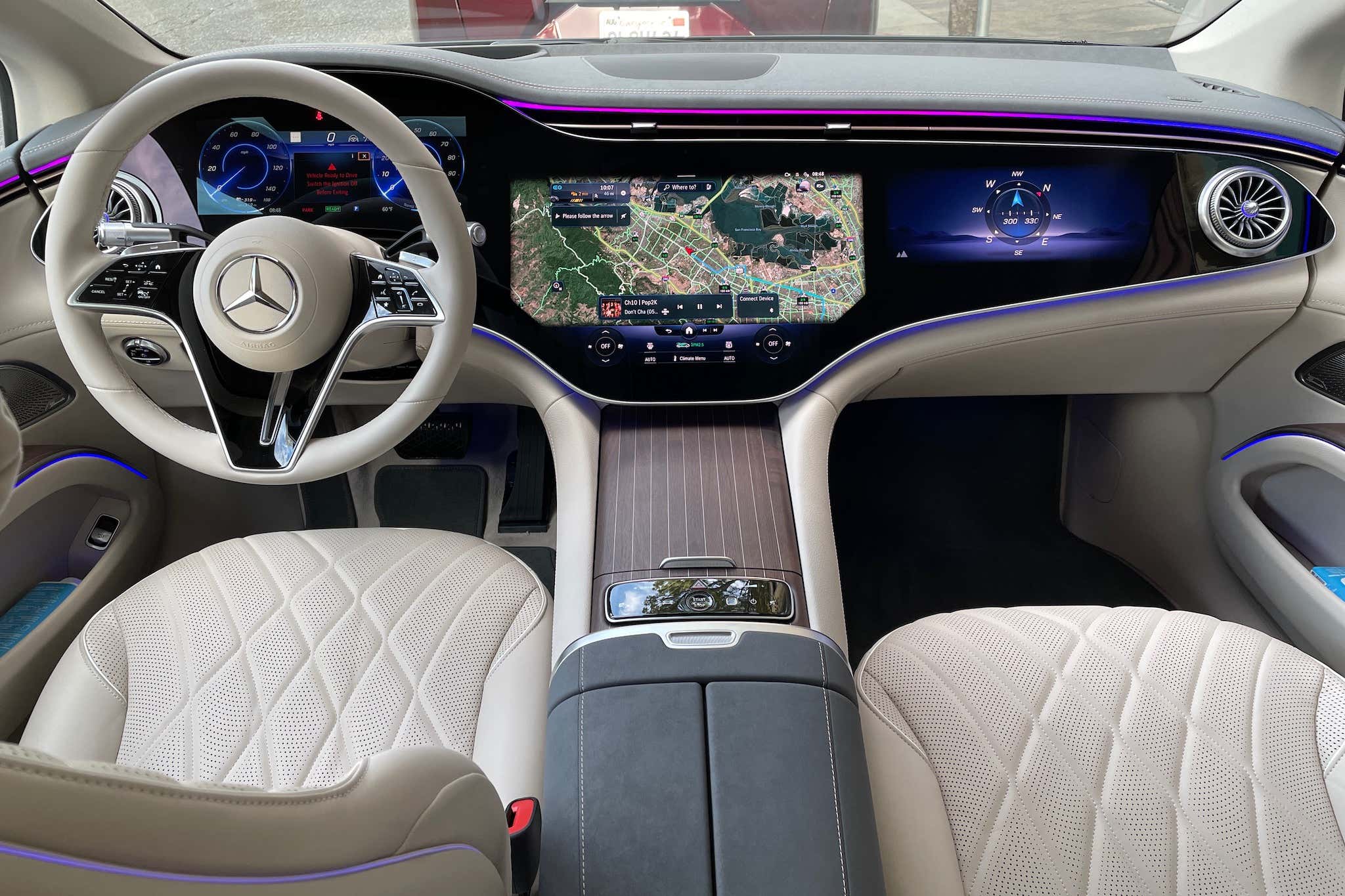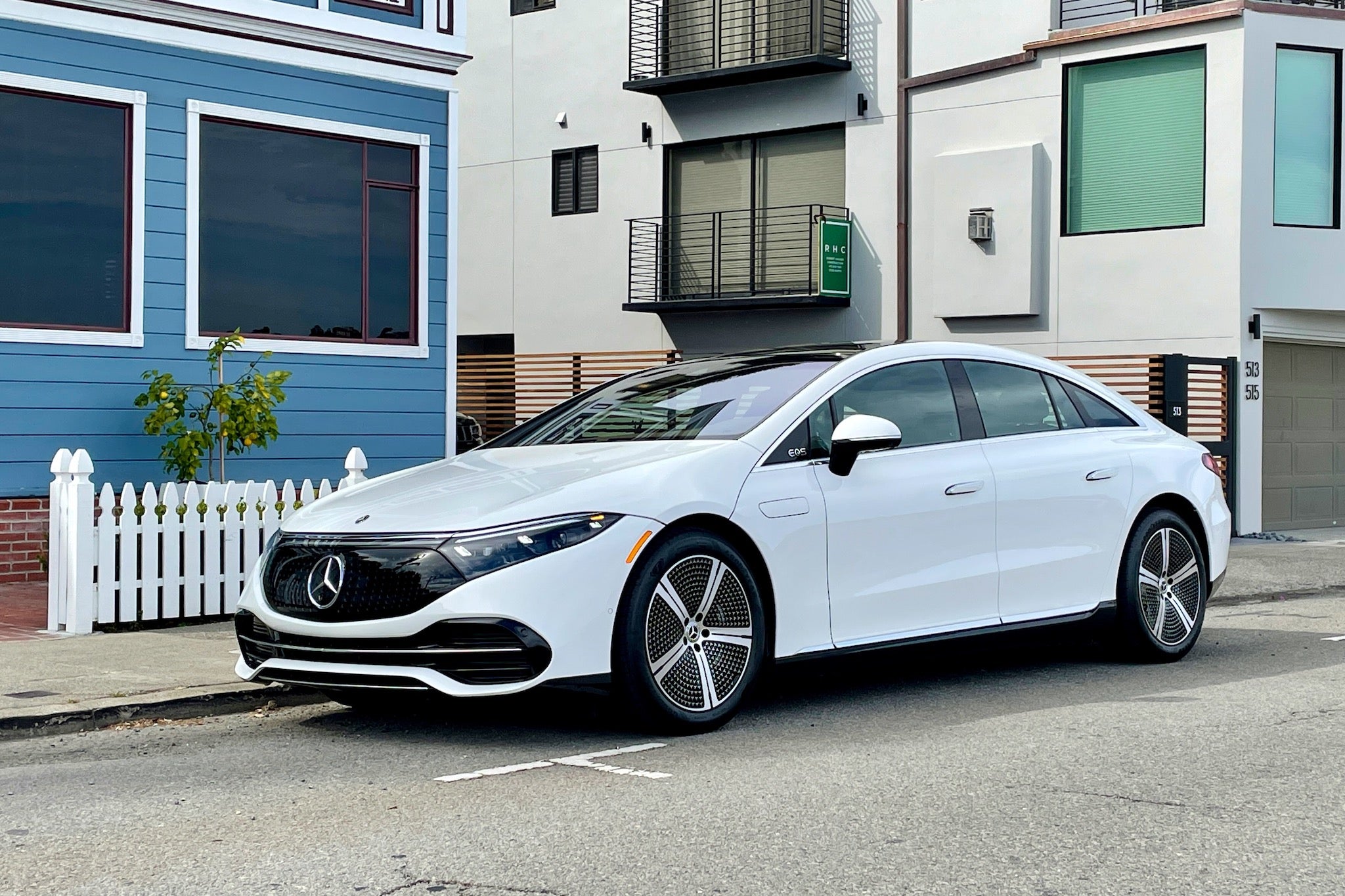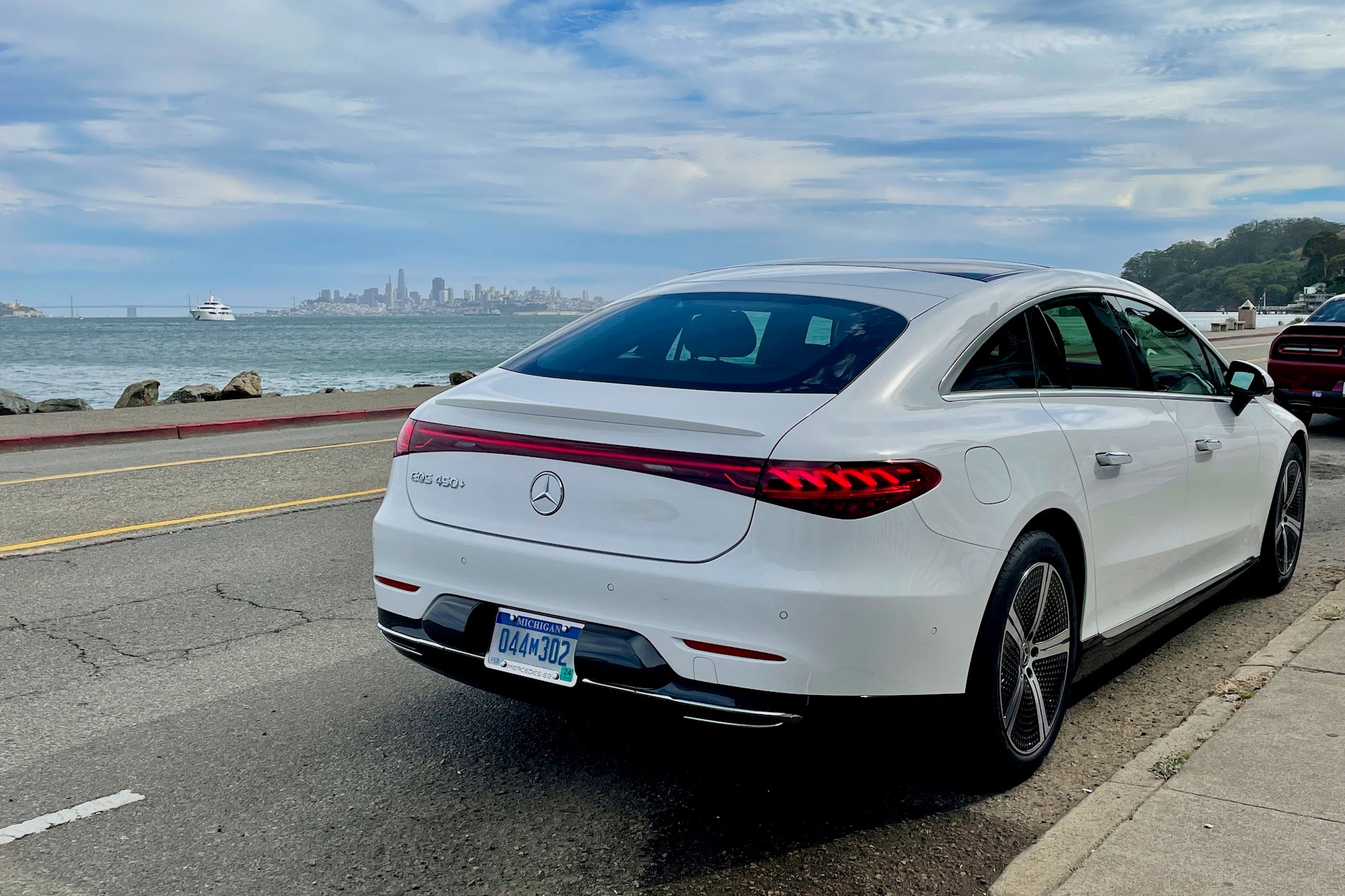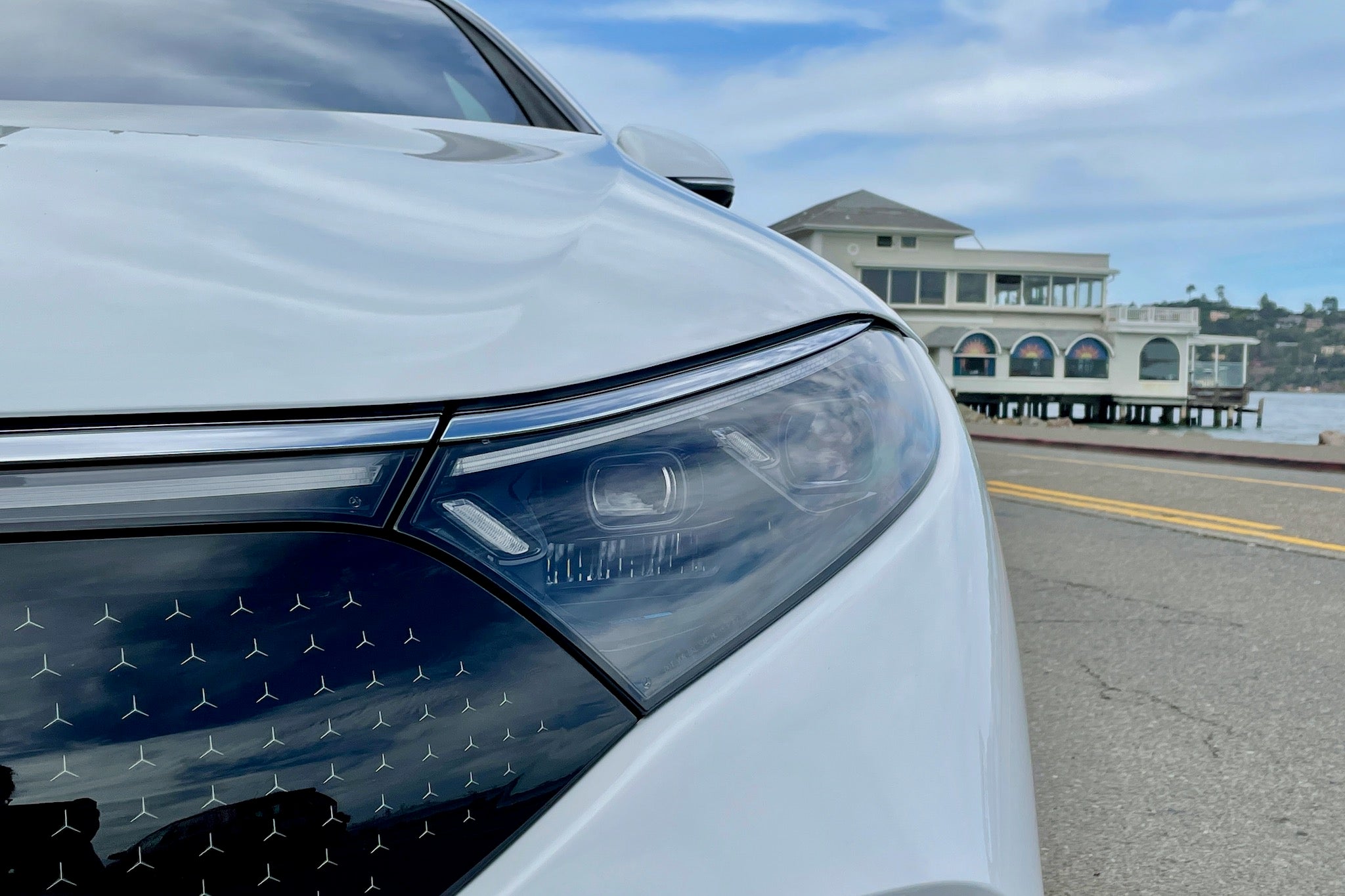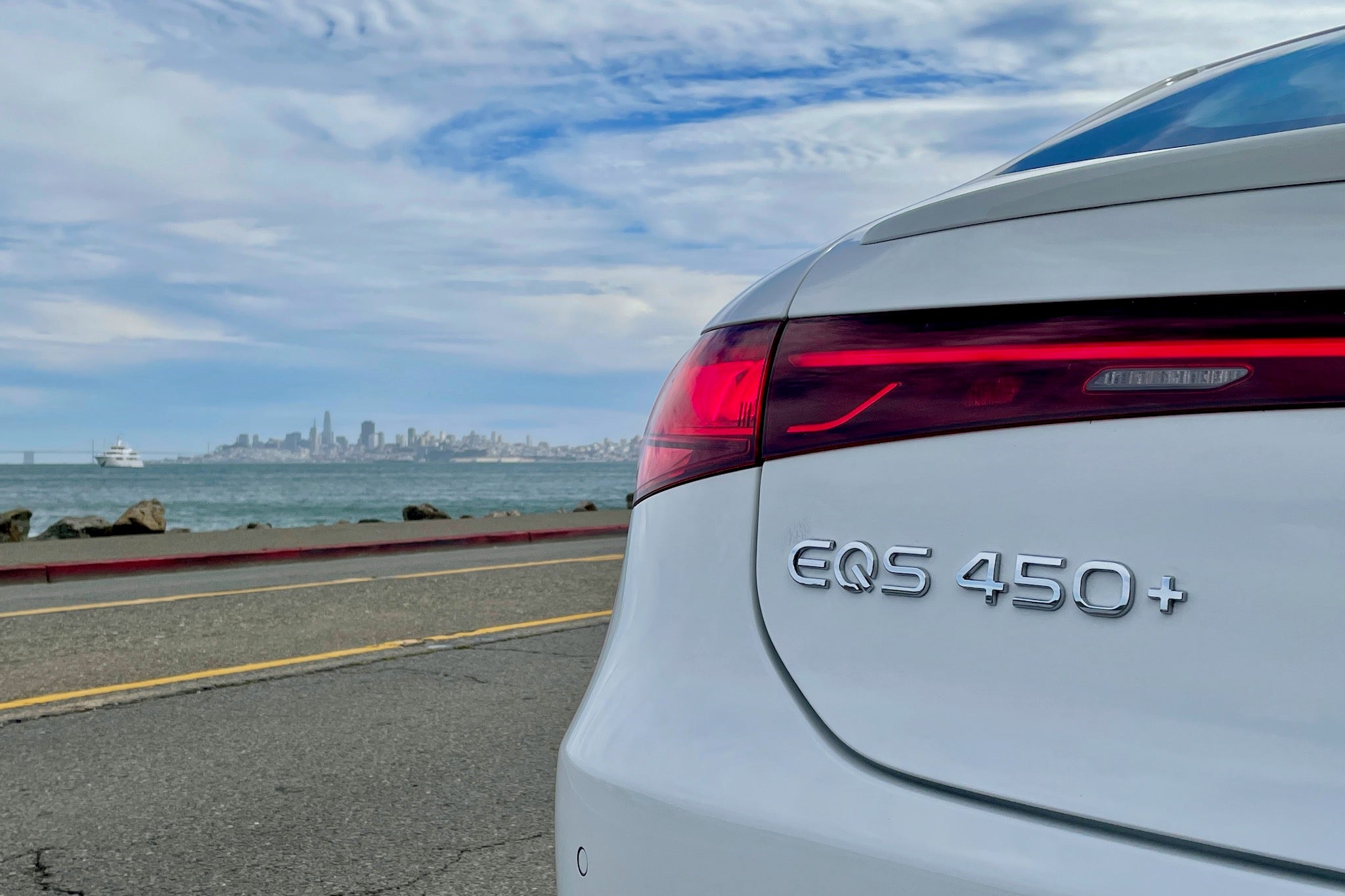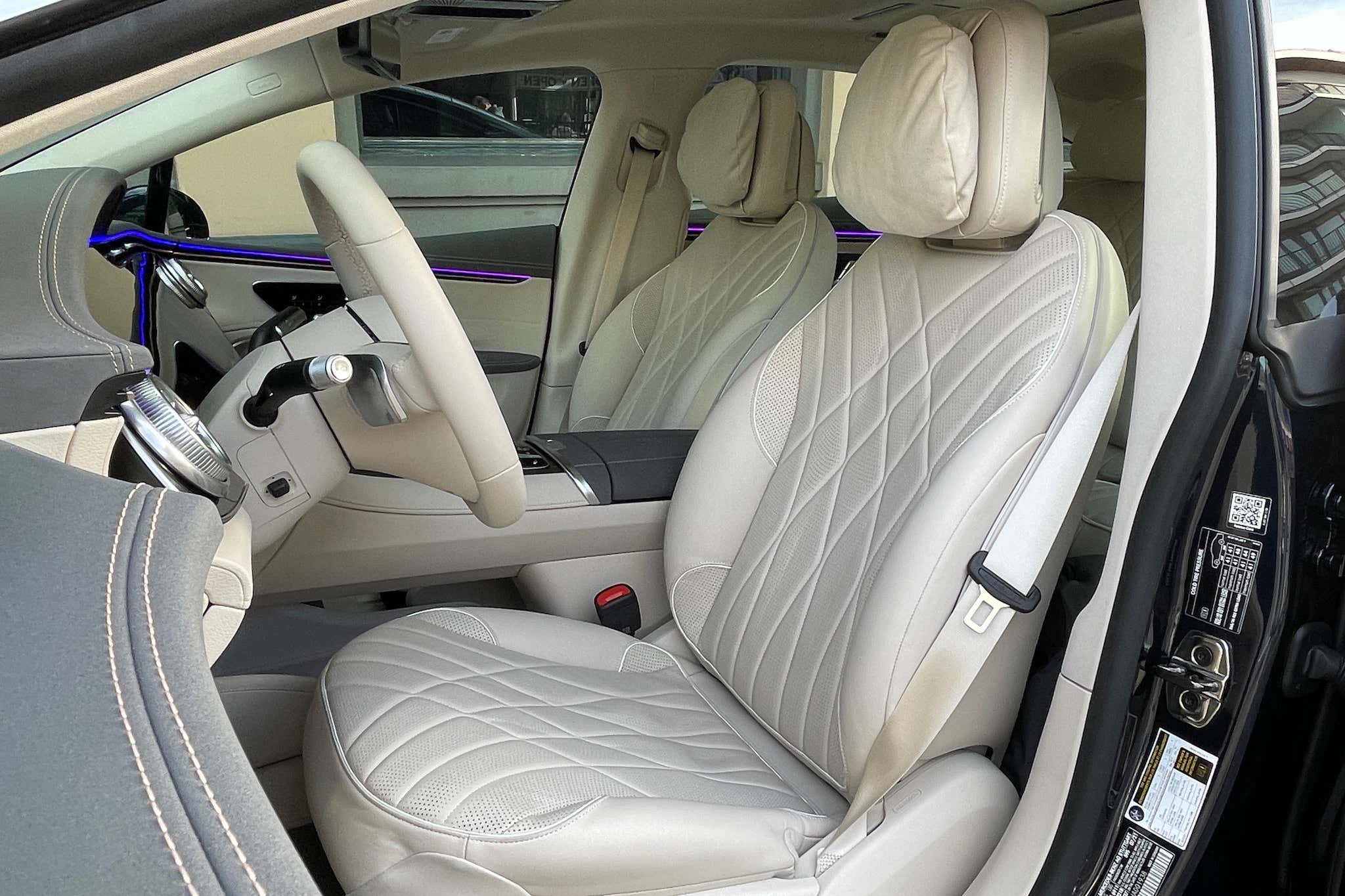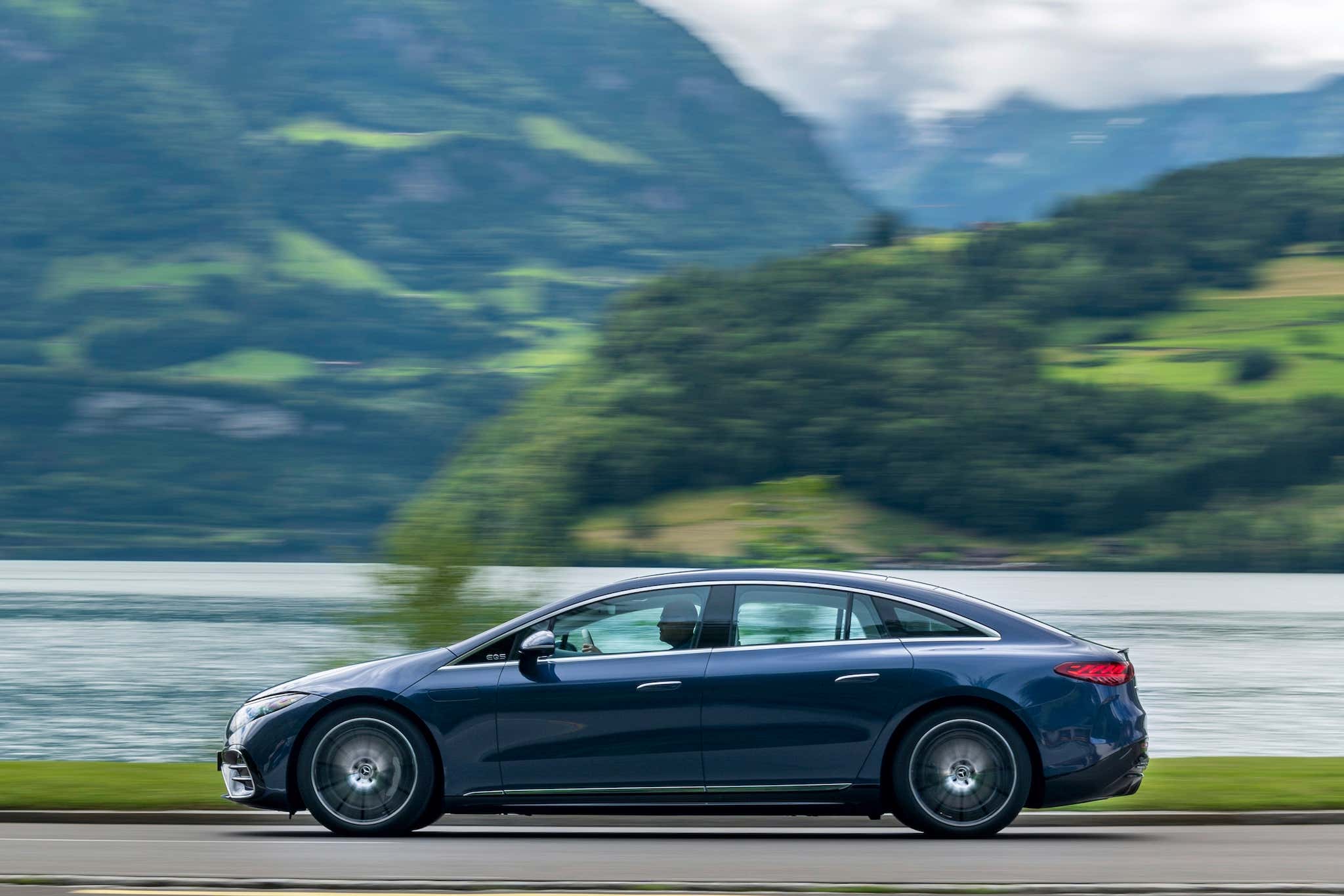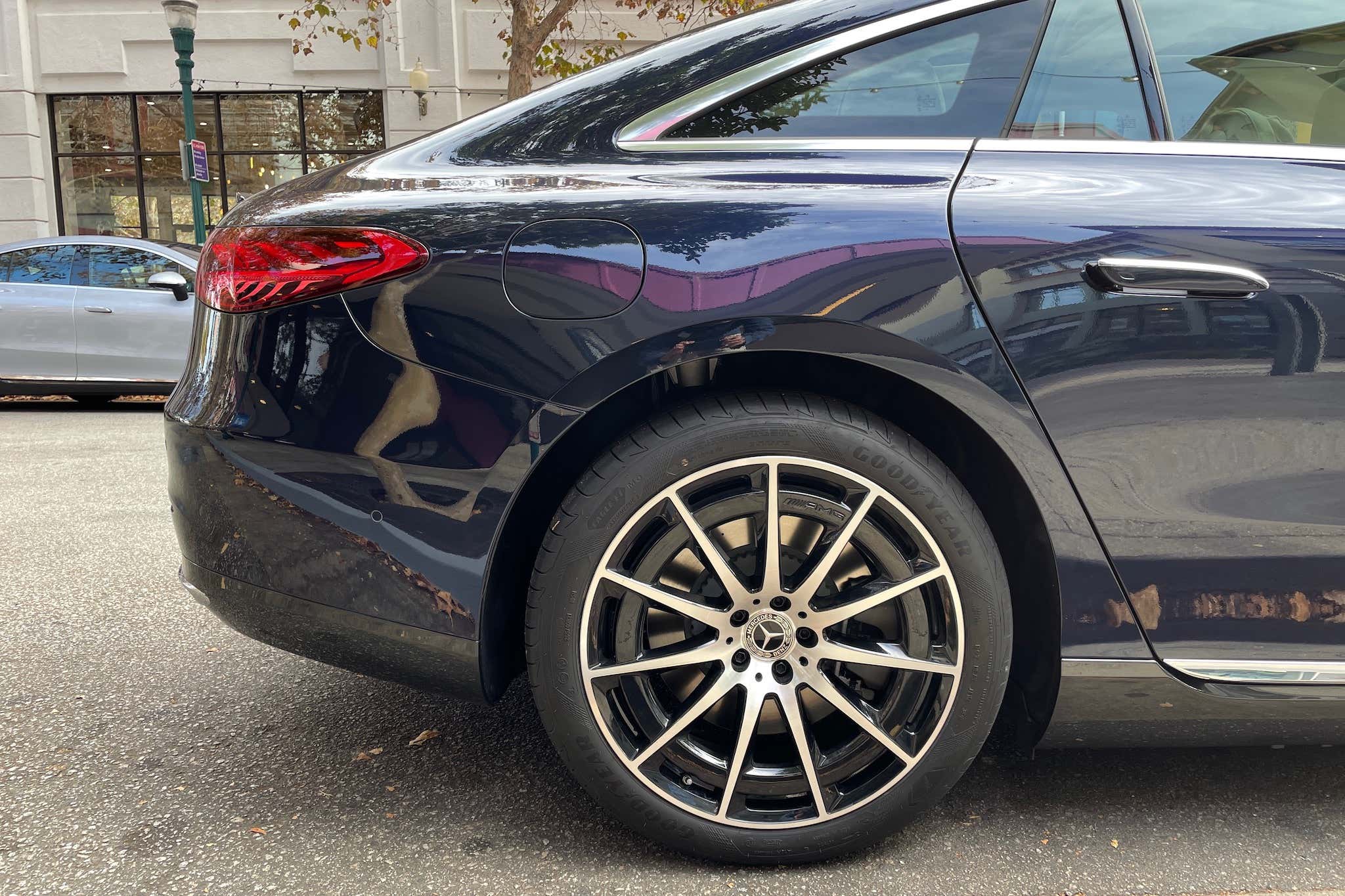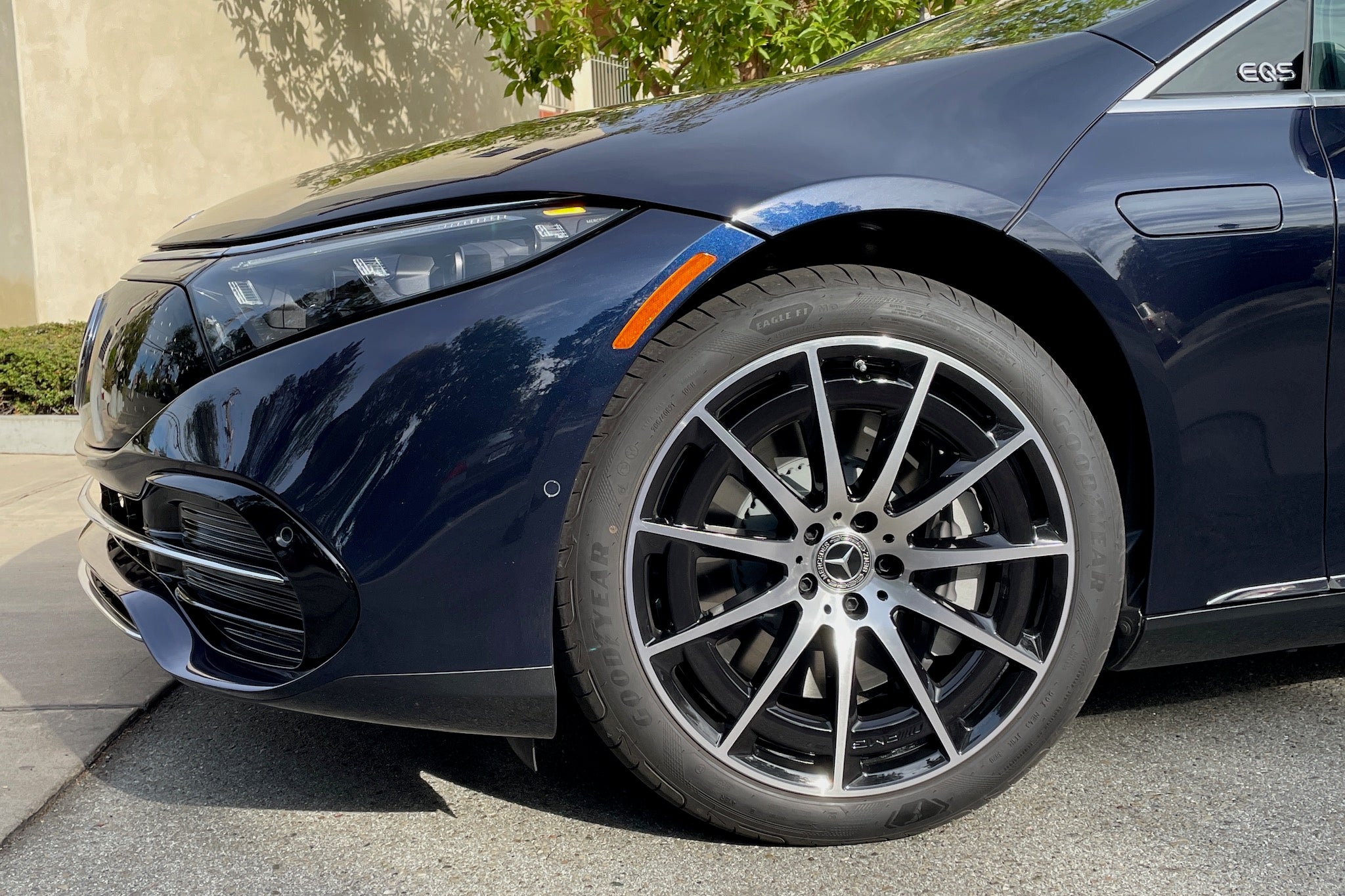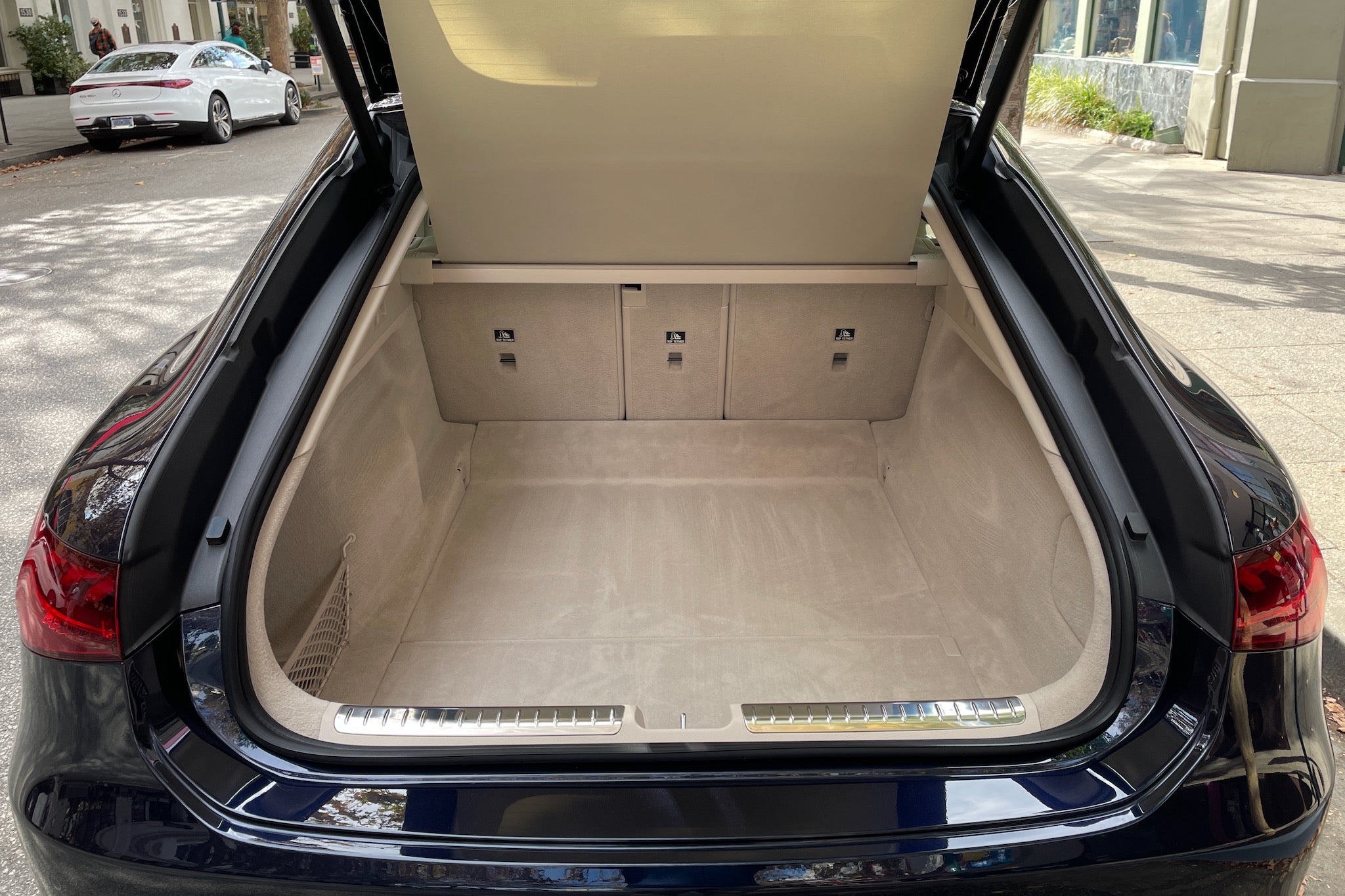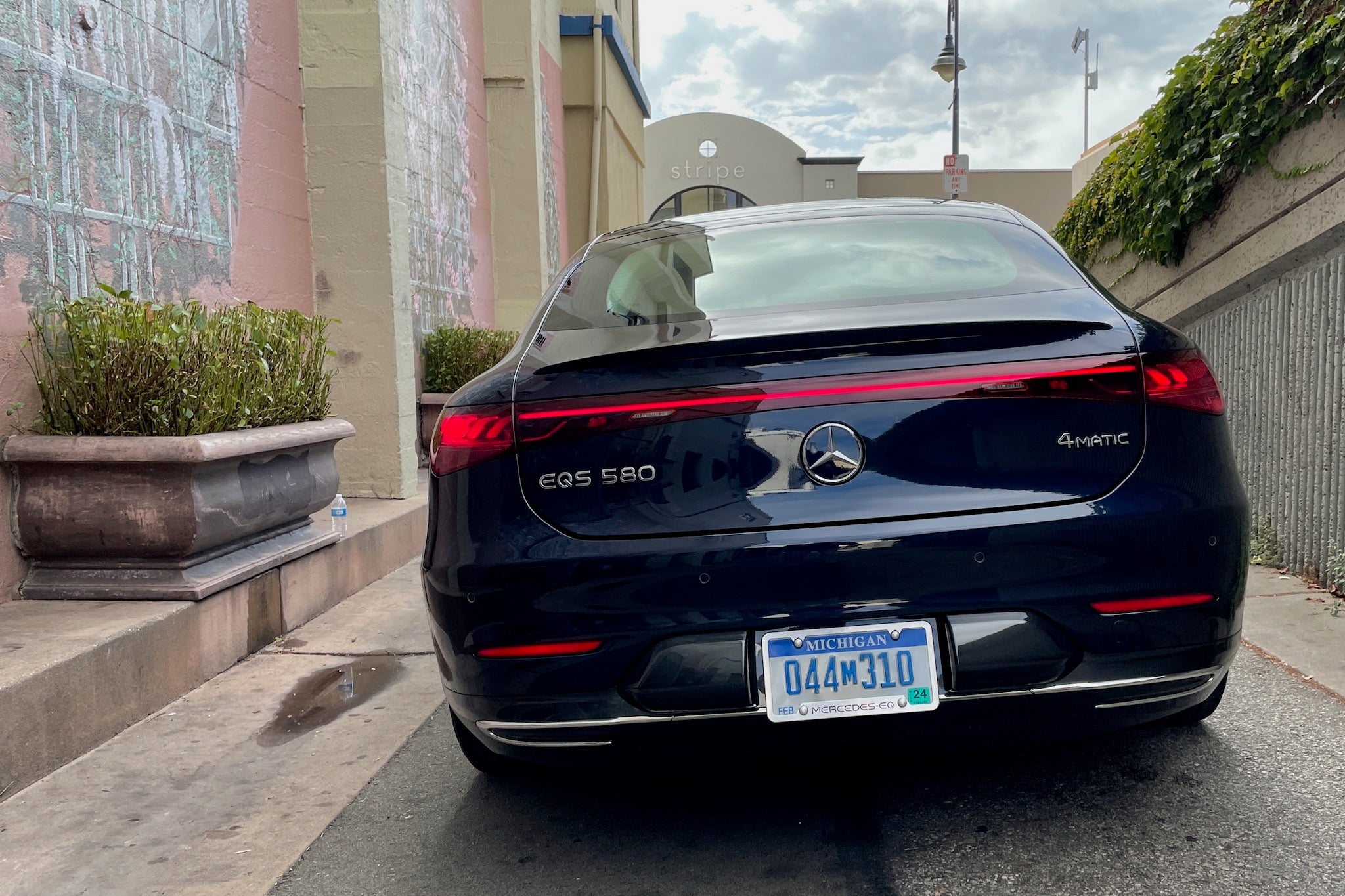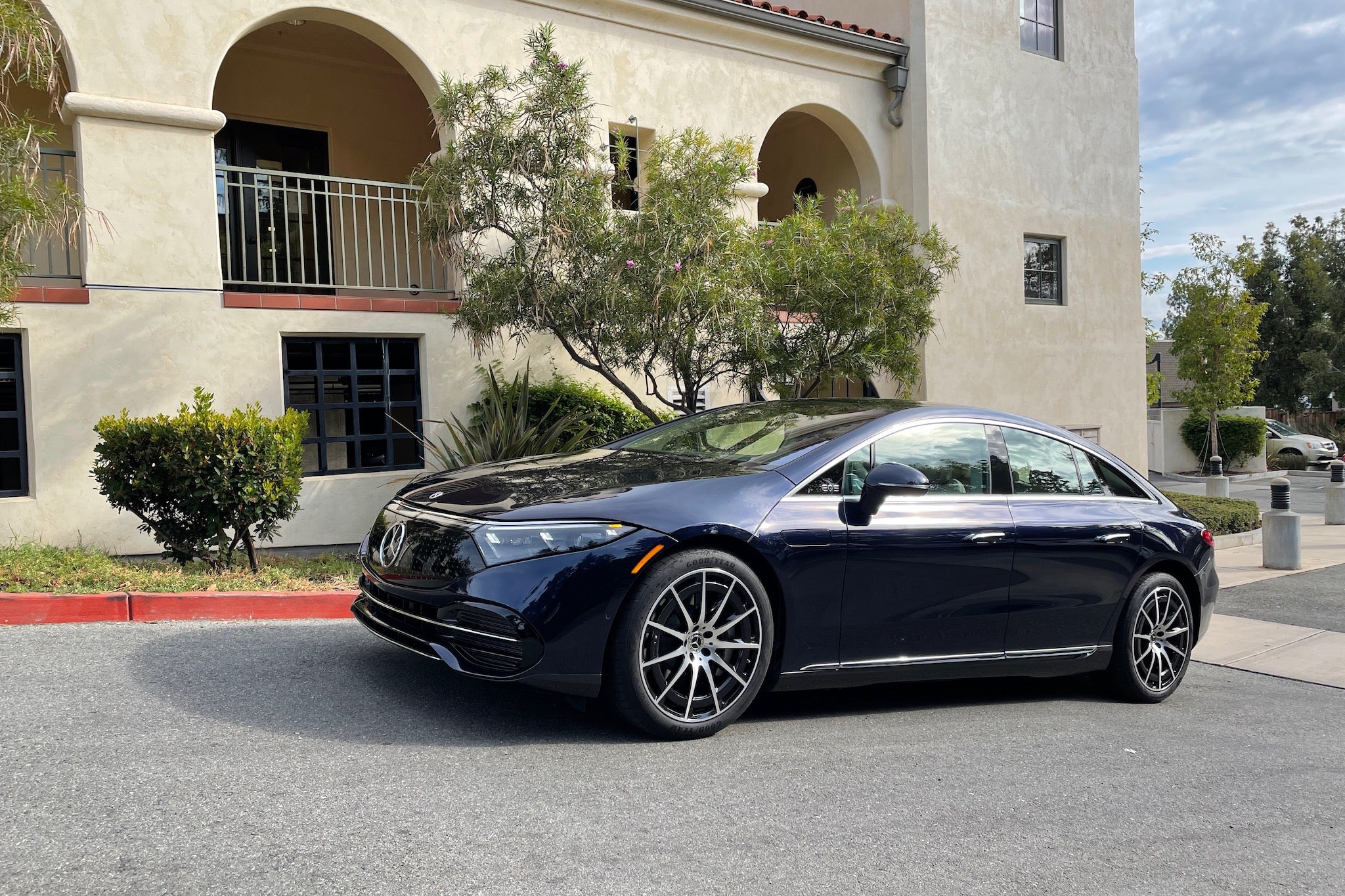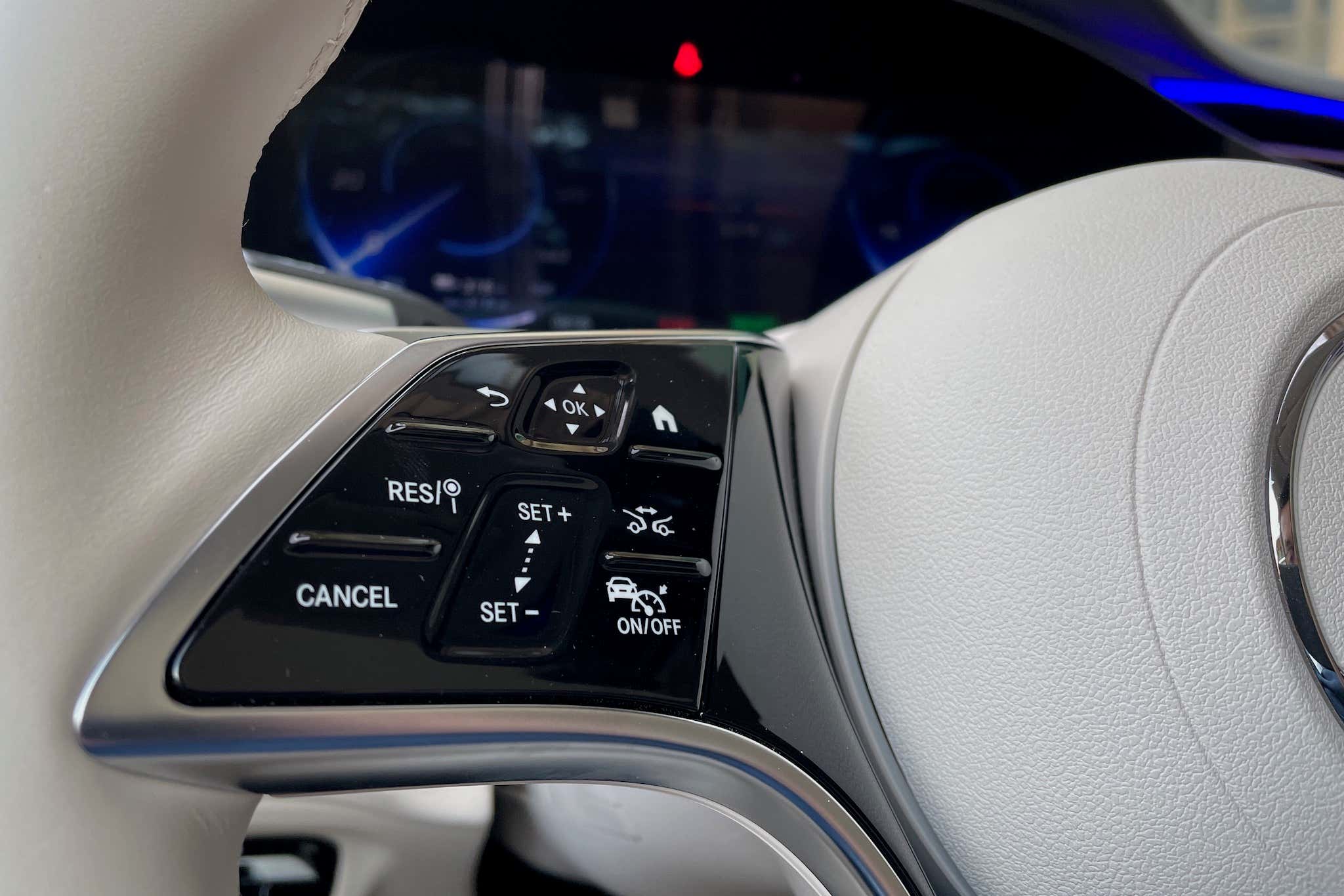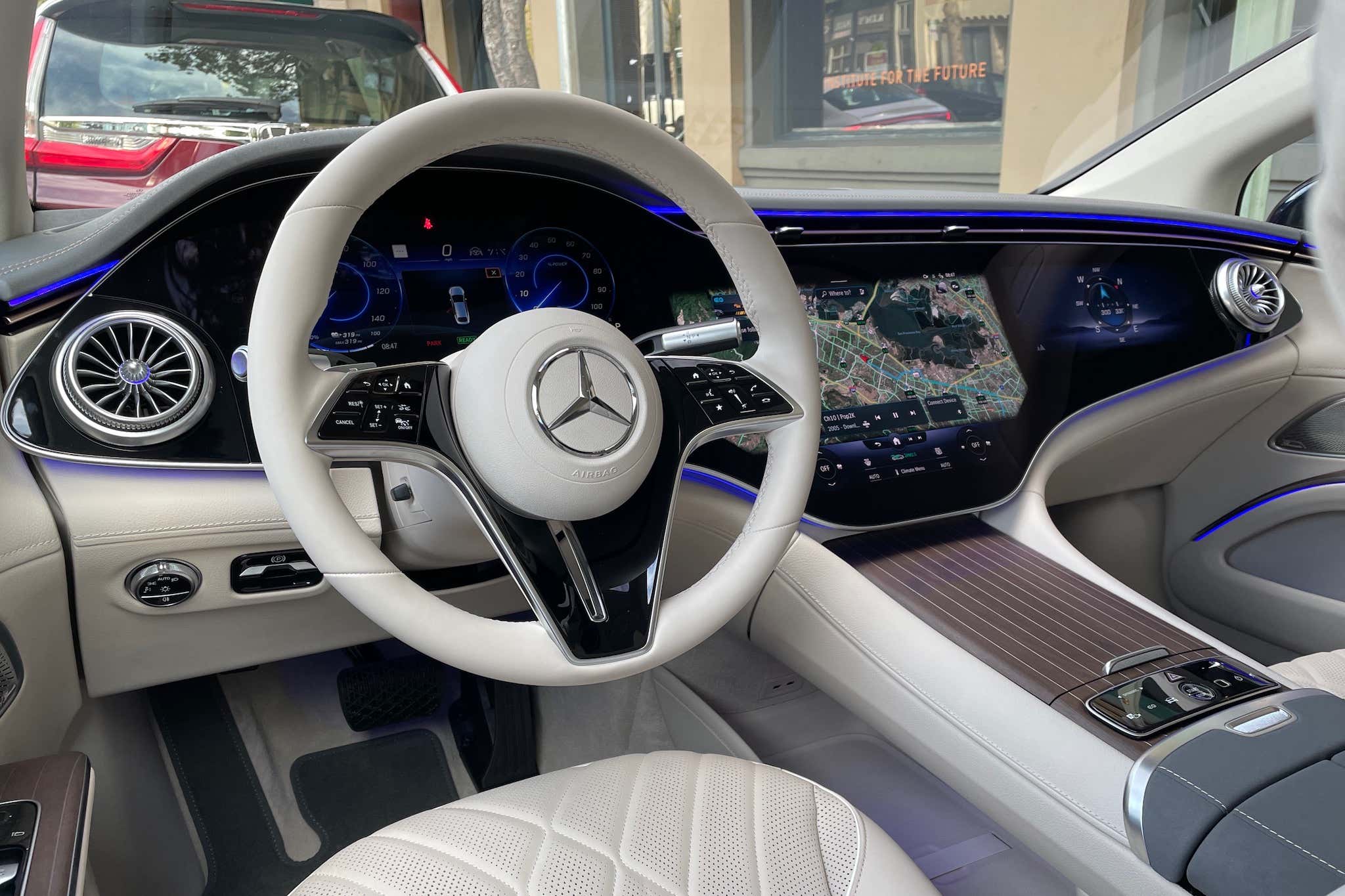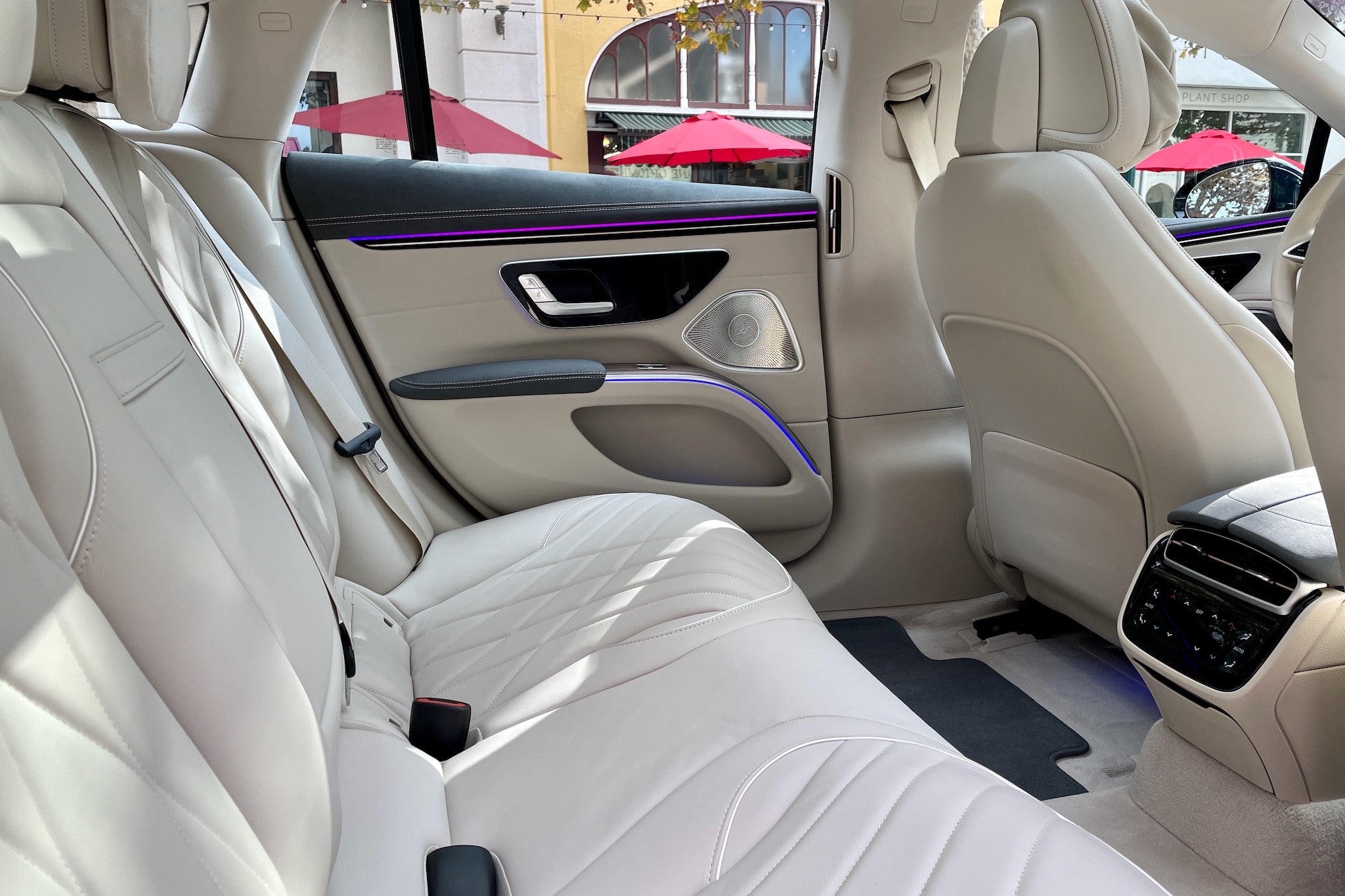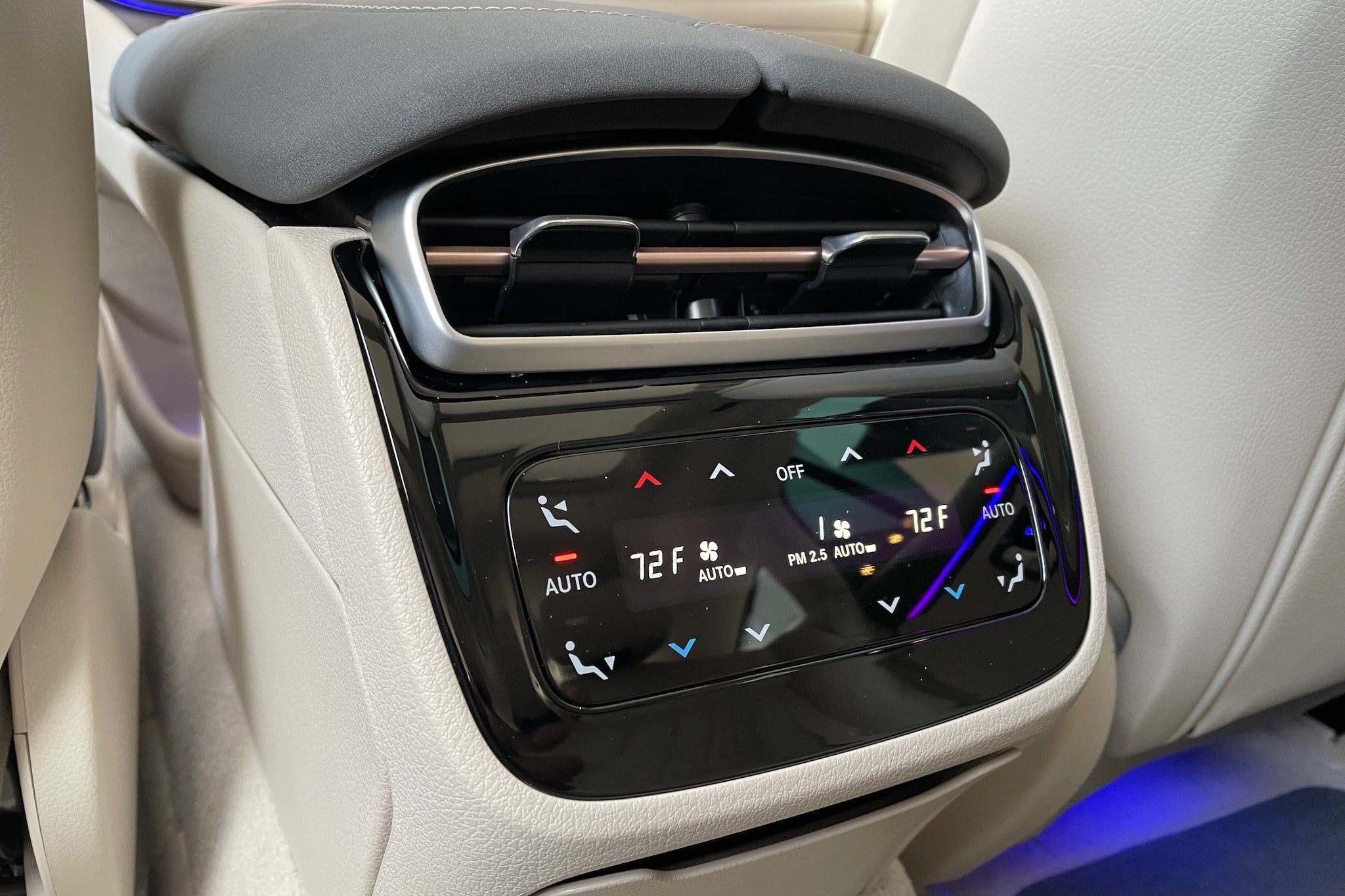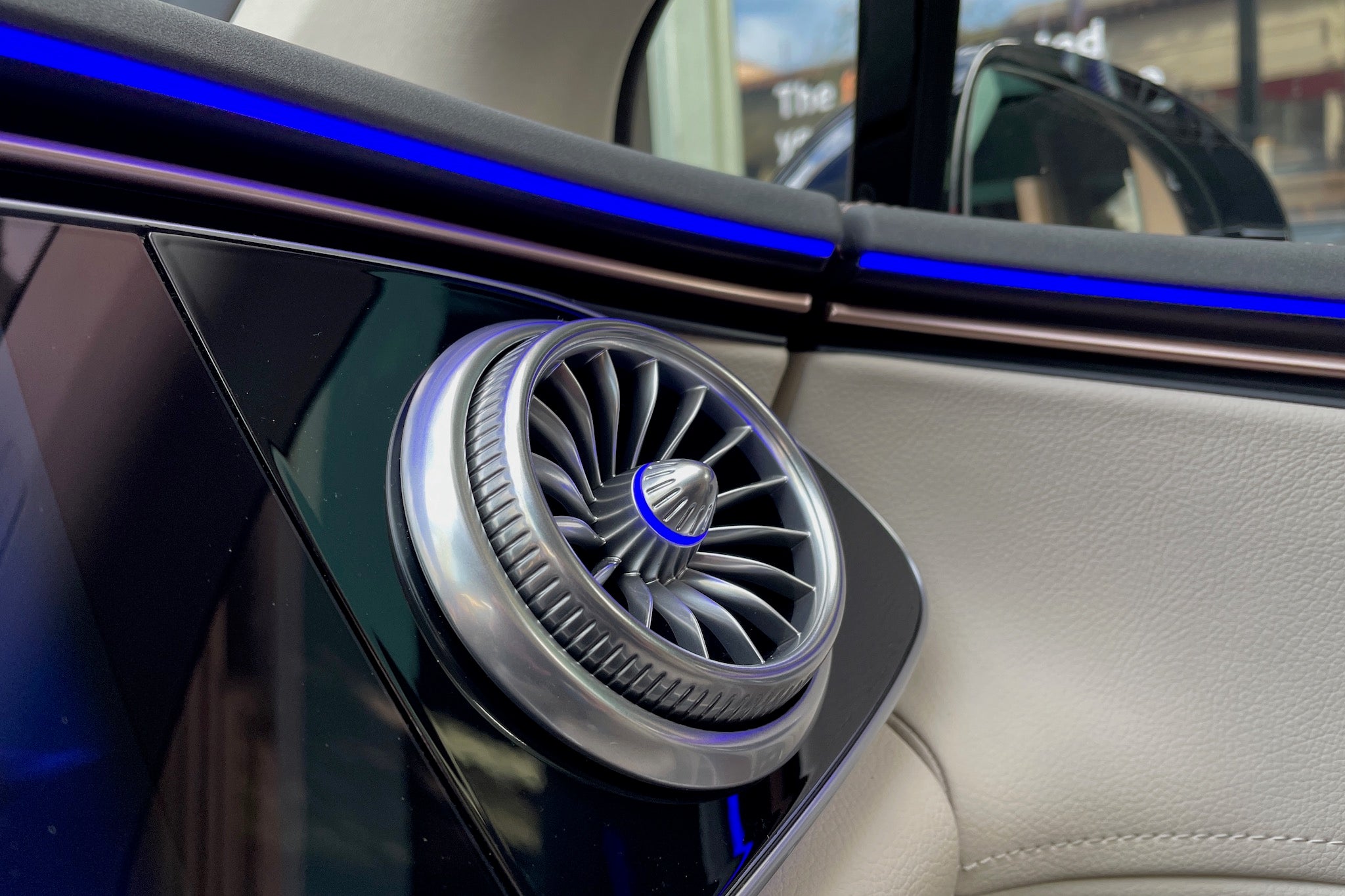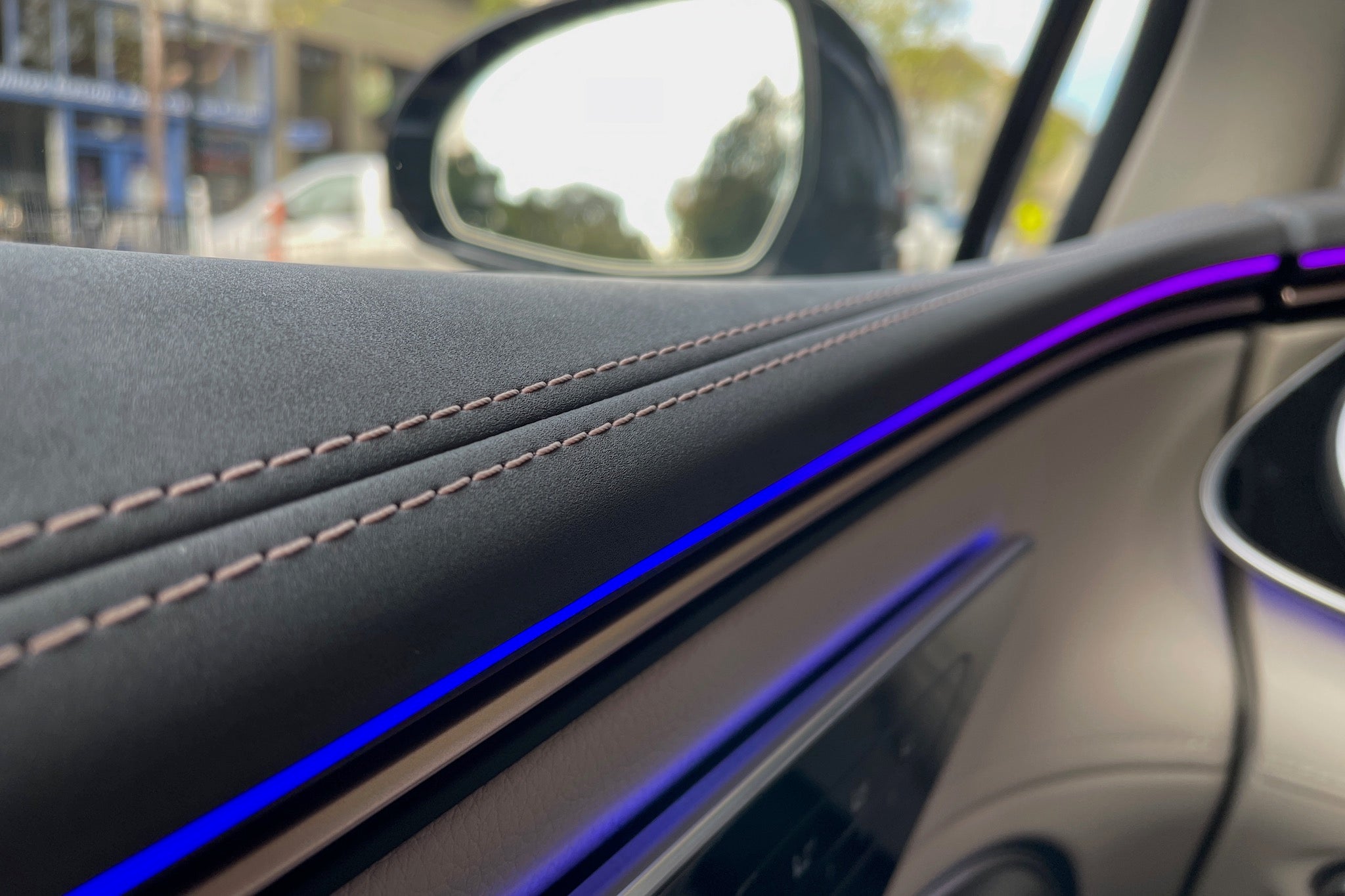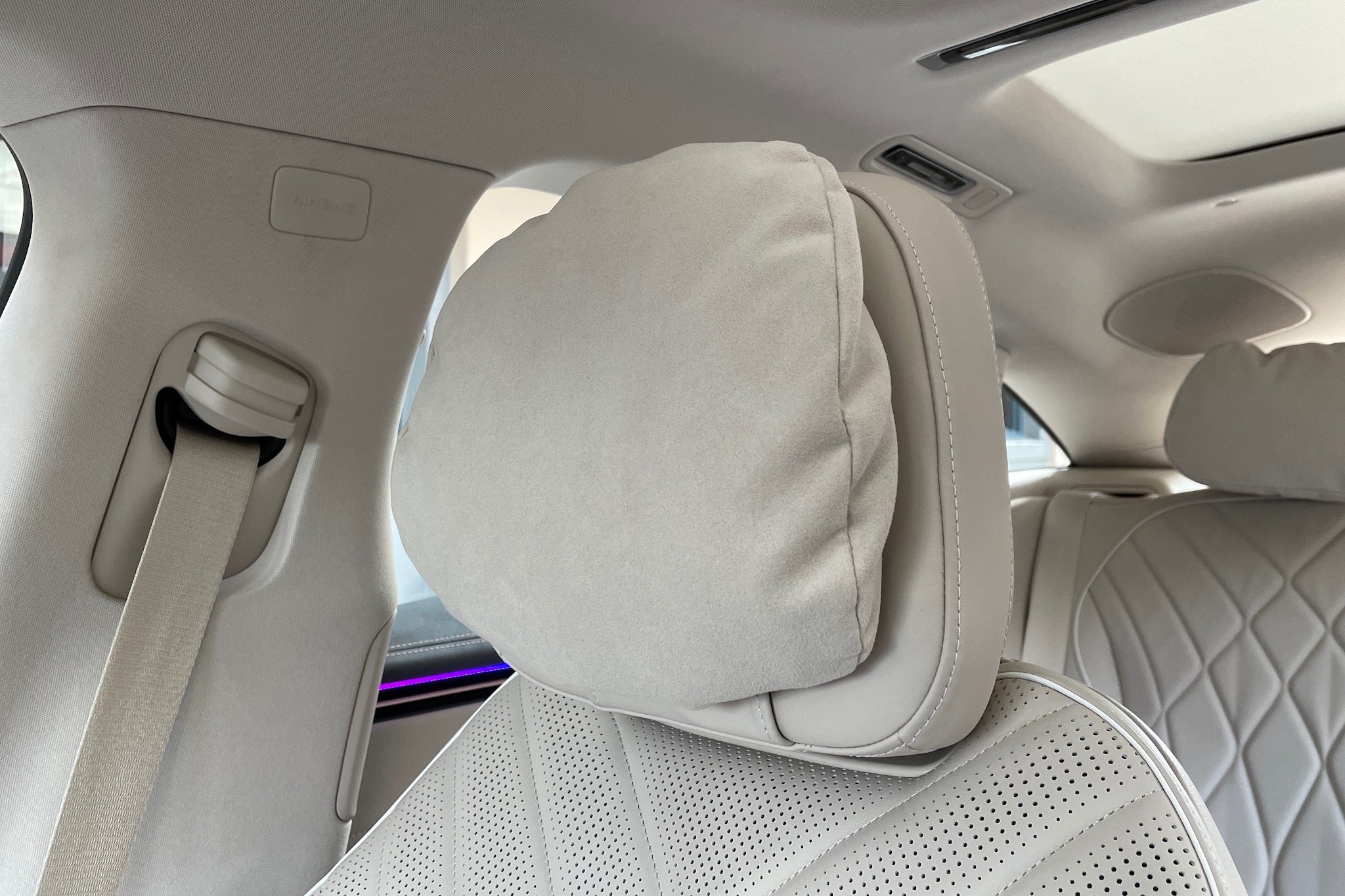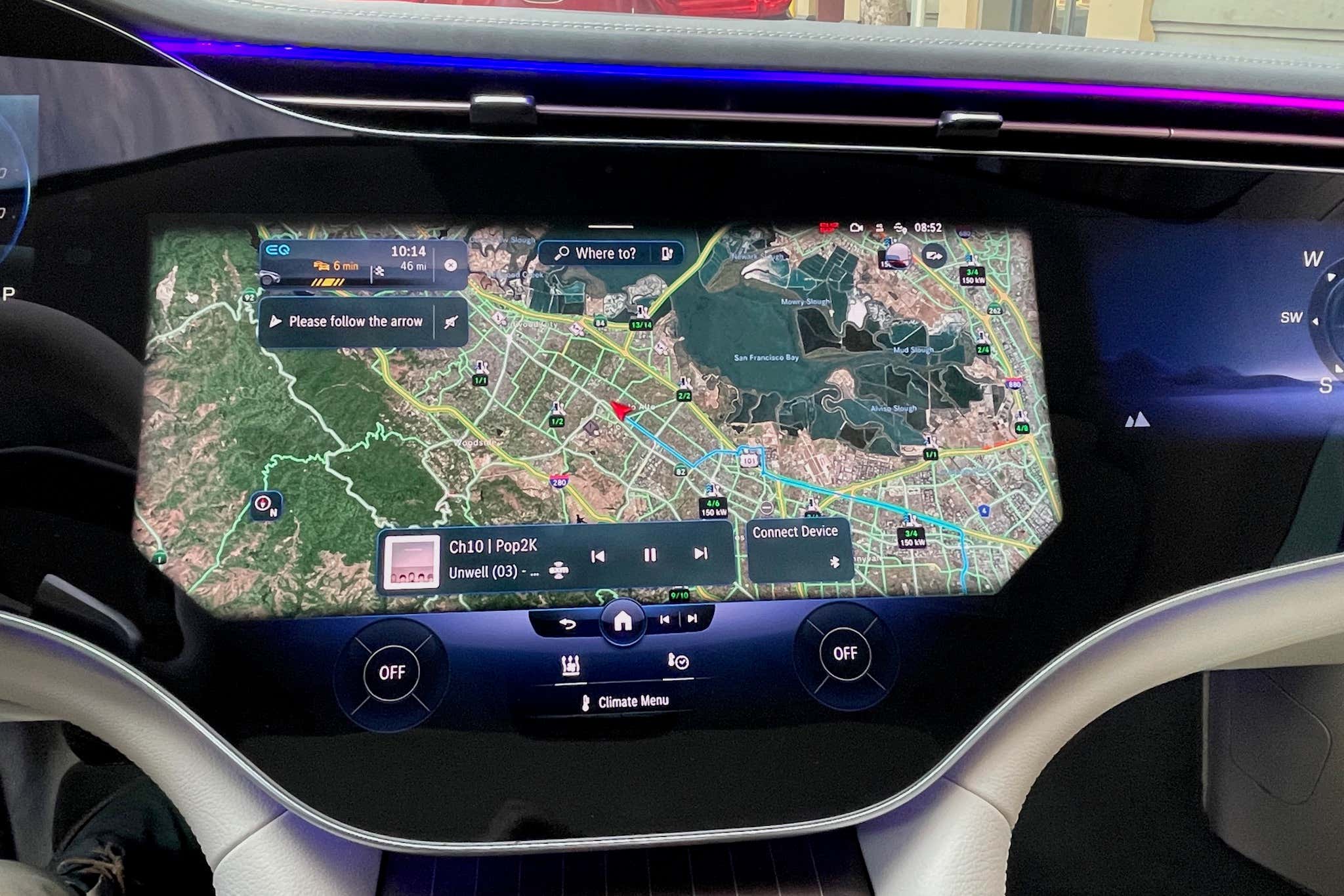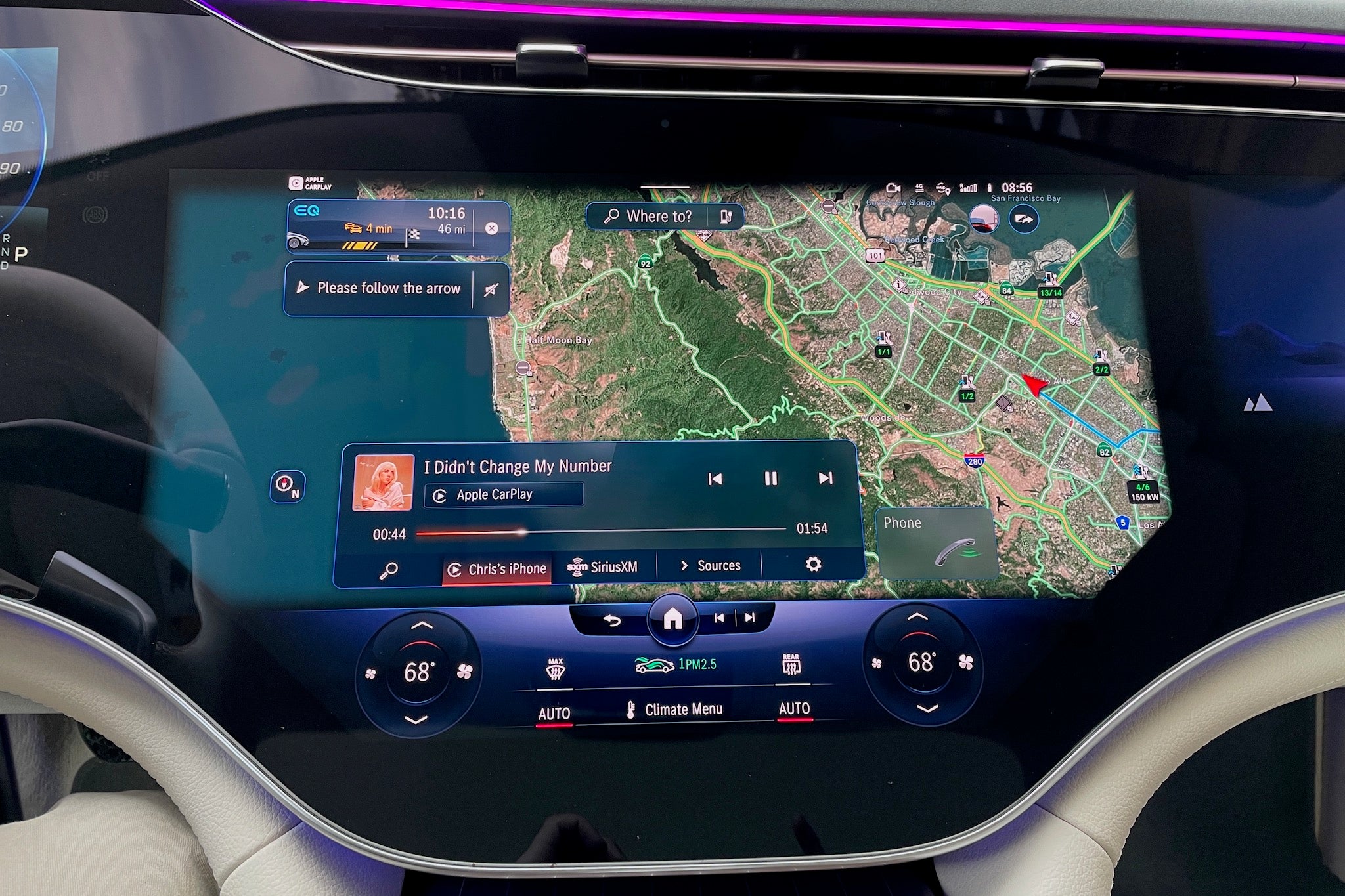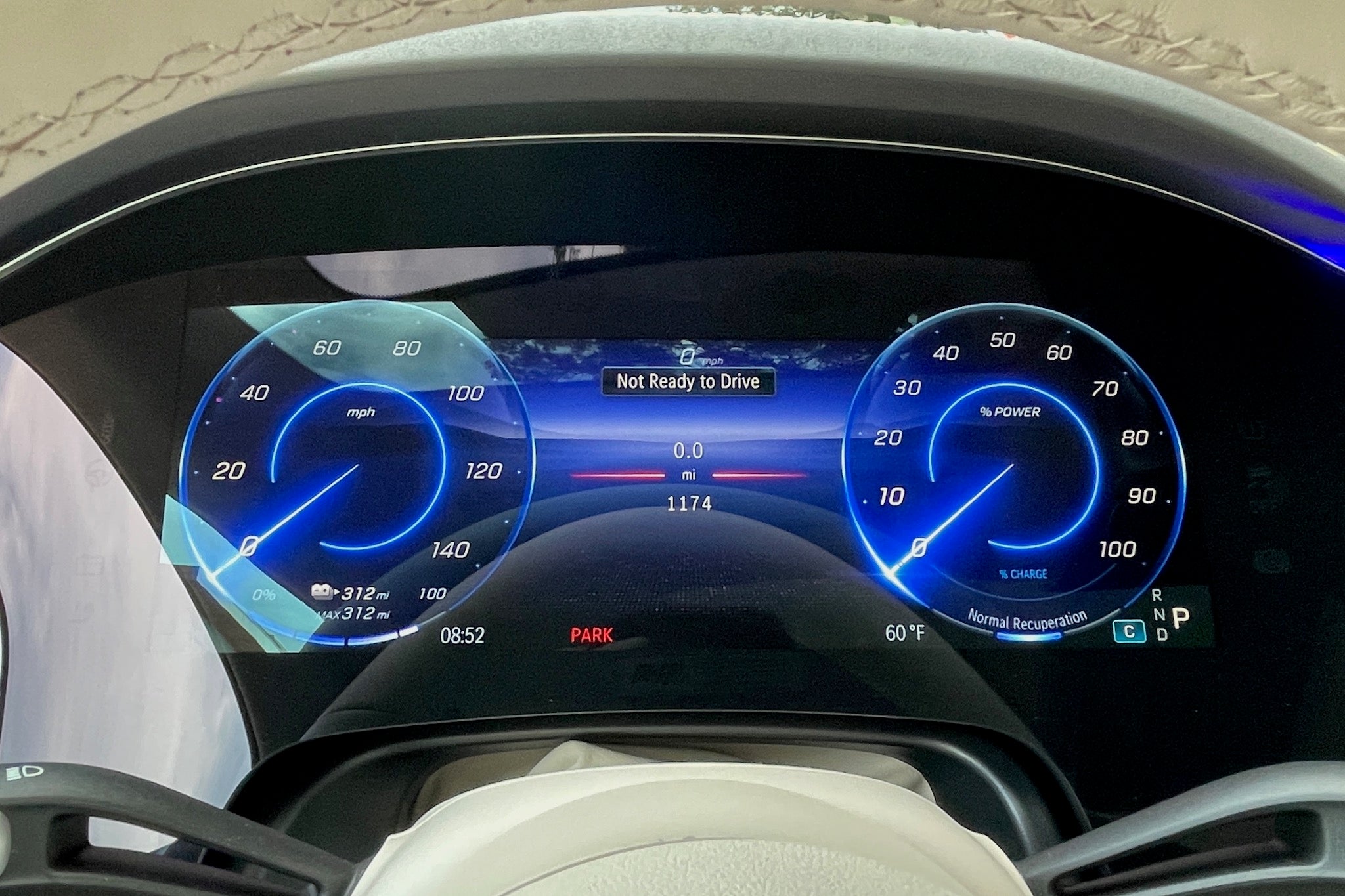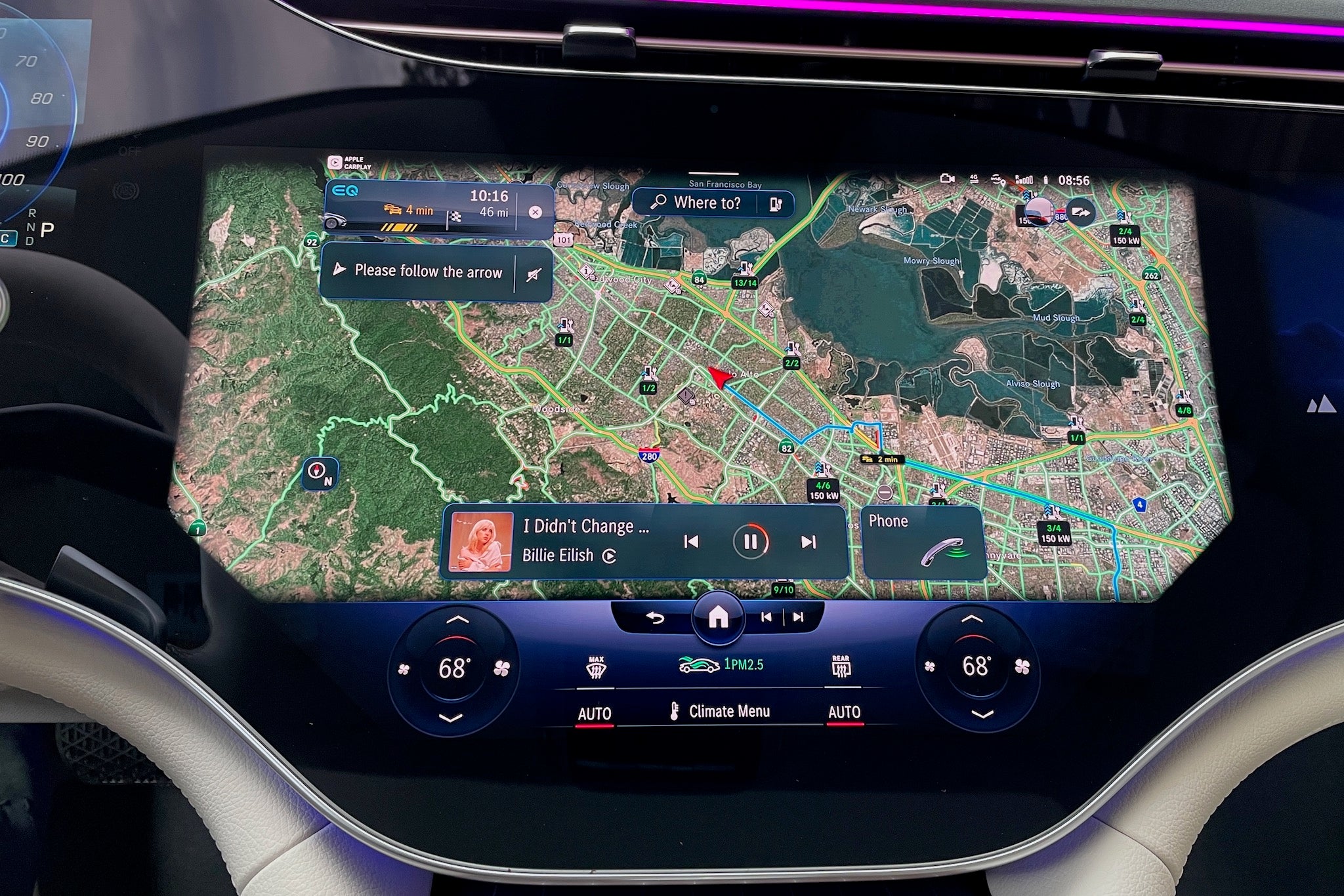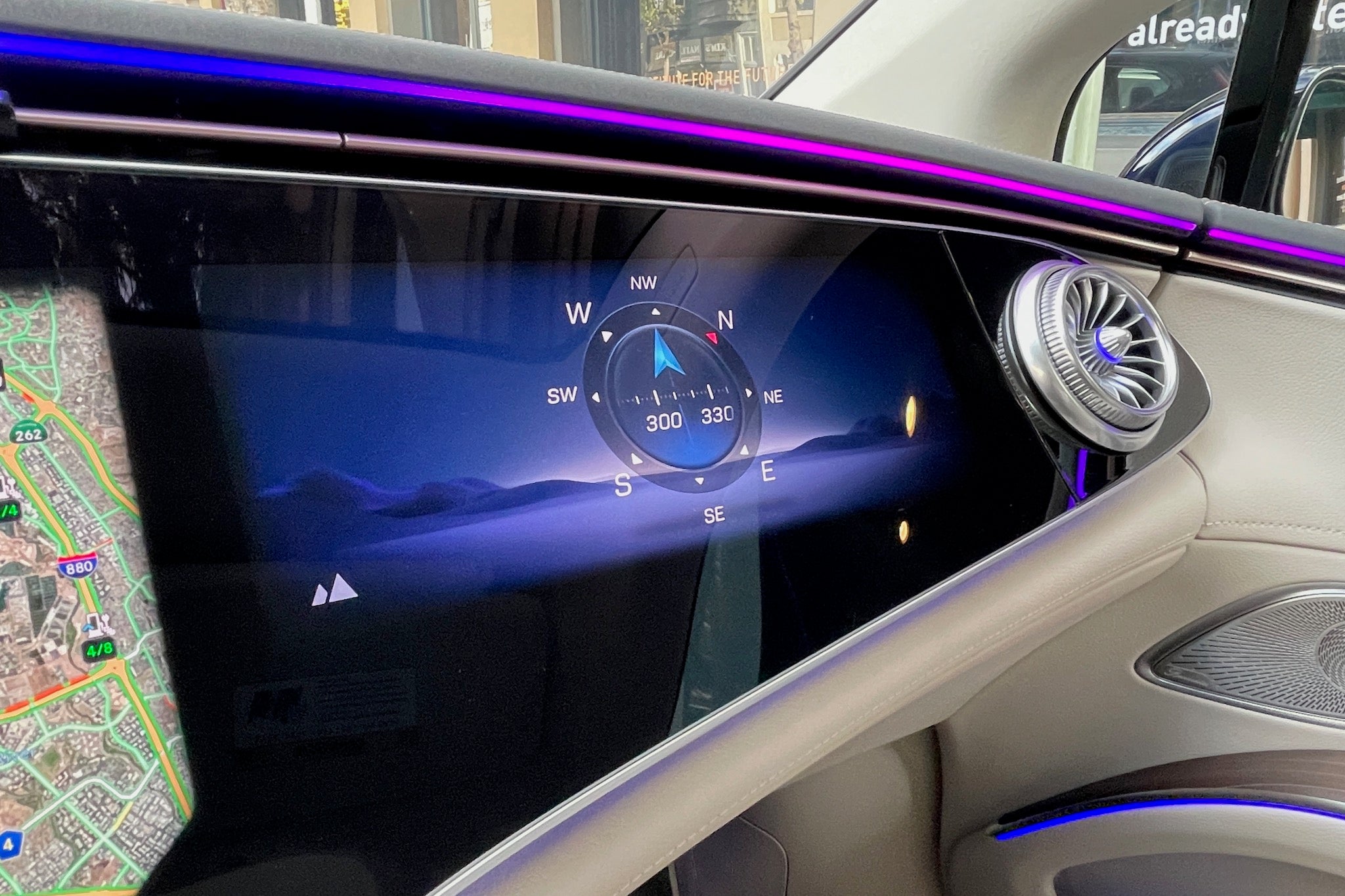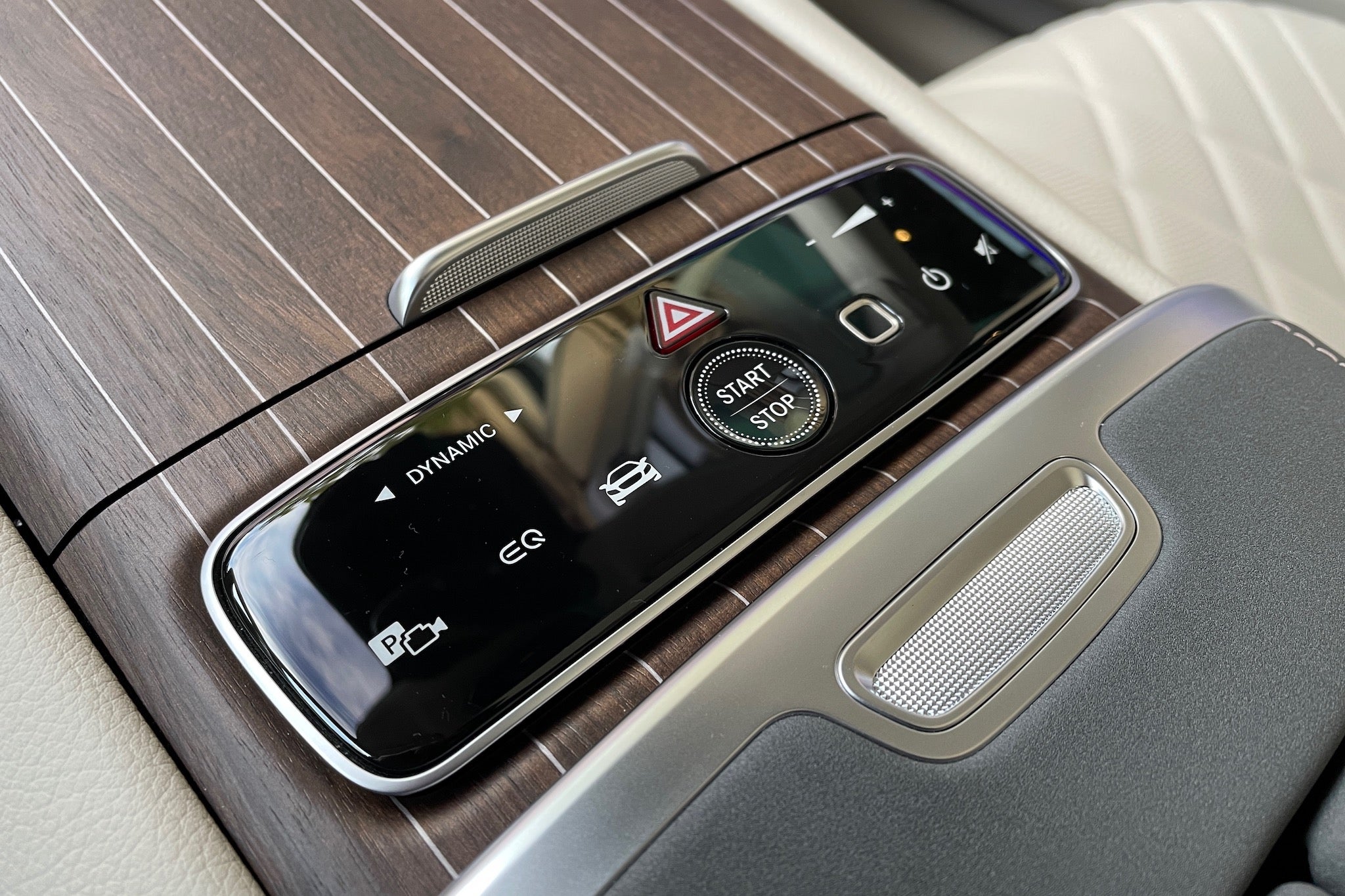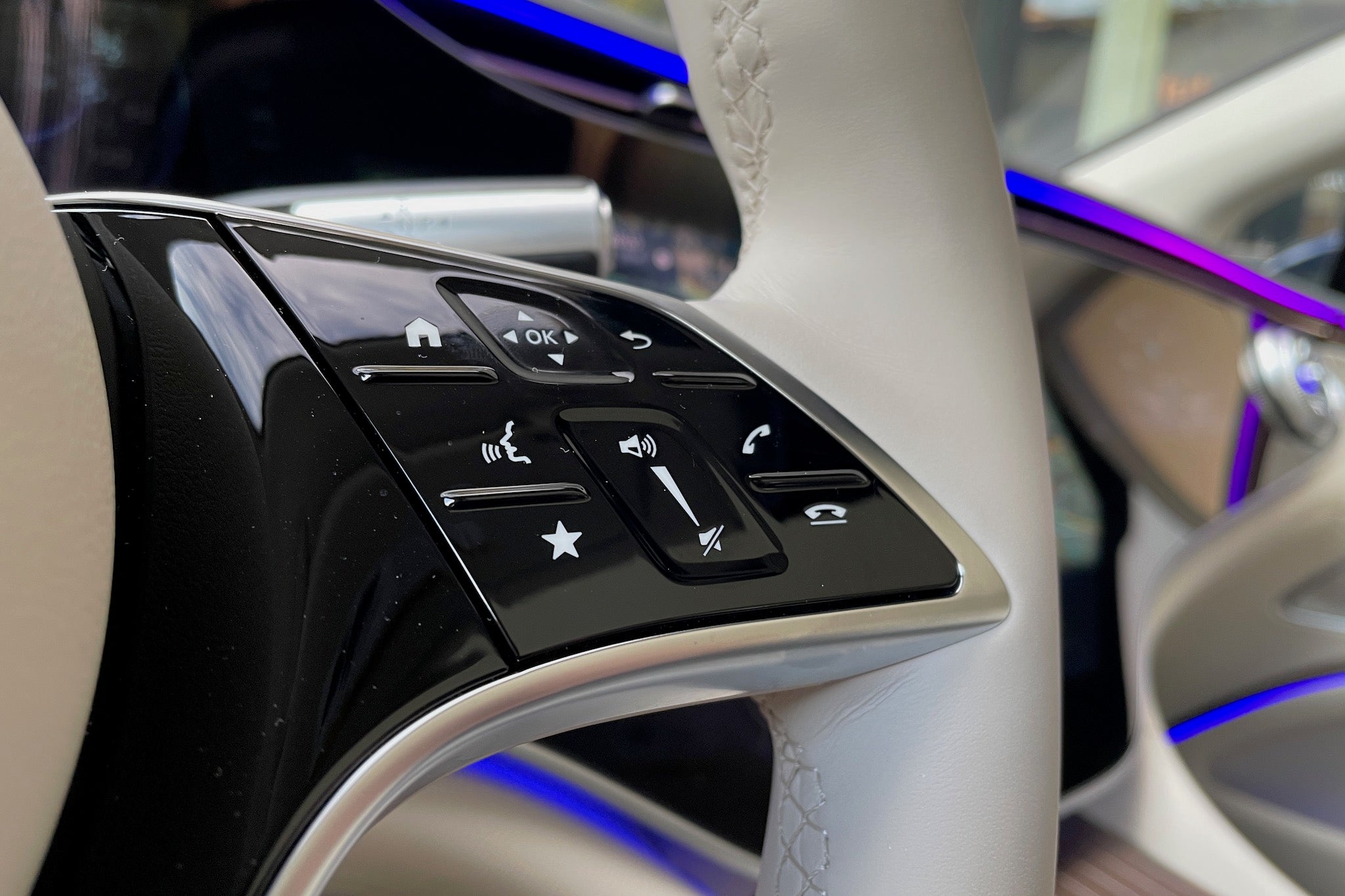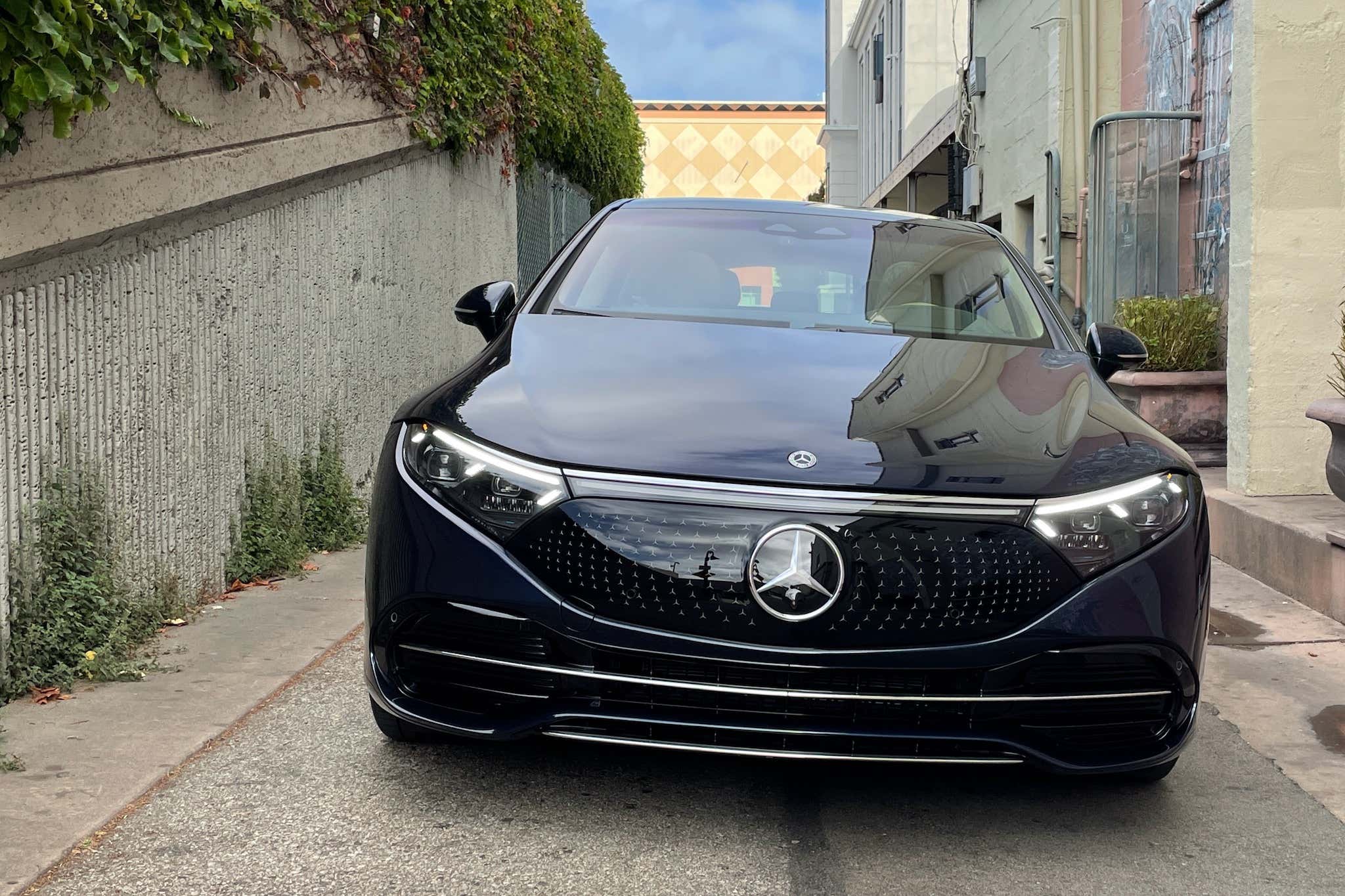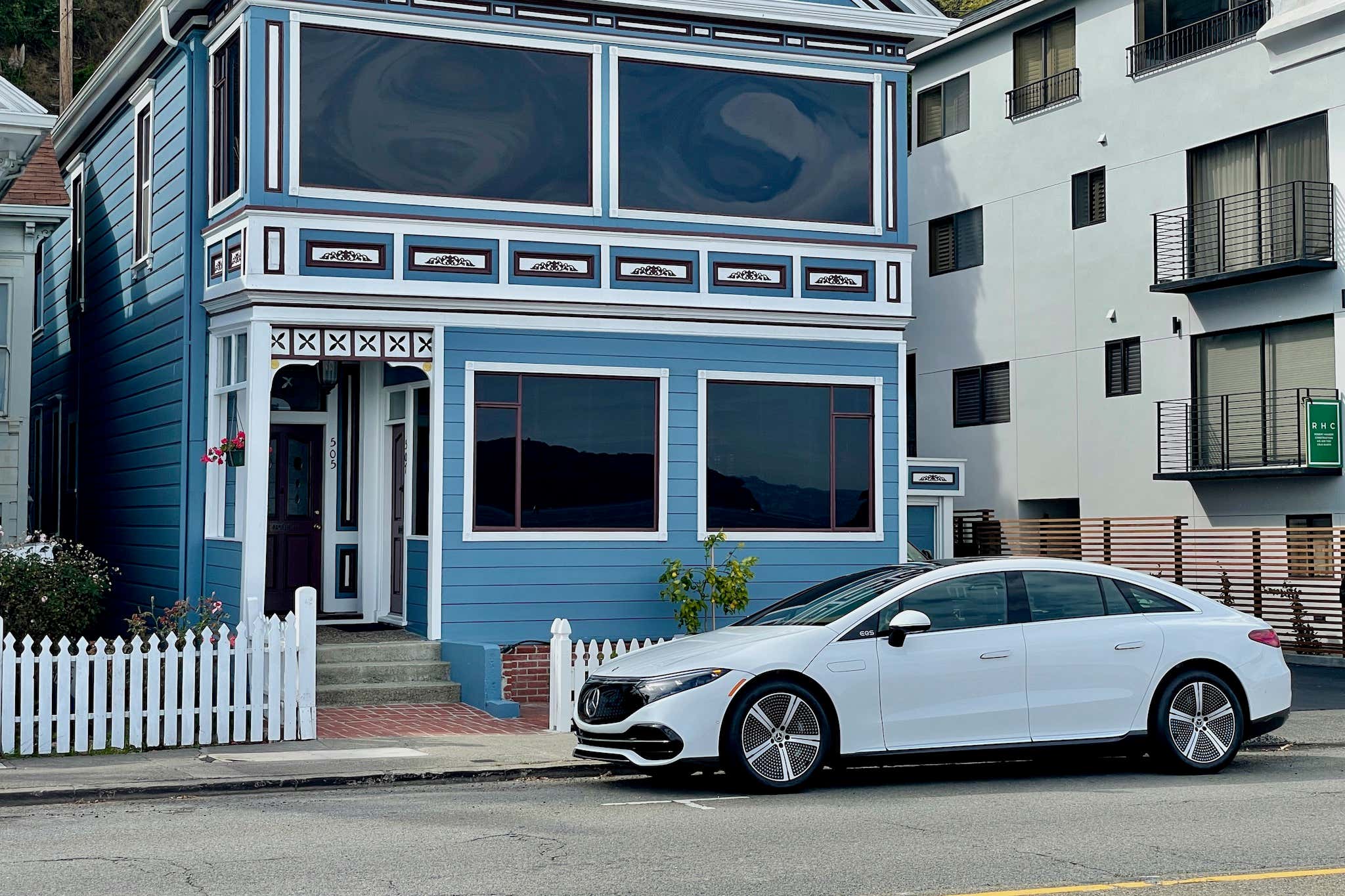One of the very first things I remember being taught in kindergarten was to “never judge a book by its cover.” Back then, the schoolteacher who said that may or may not have been referring to the literal children’s books that we were encouraged to pick up and peruse. But it’s a lesson that’s stuck with me to this day, and an approach I try to apply to life in general and every car I test, including the all-new 2022 Mercedes-EQ EQS.
It’s also an adage I wish more people would live by because underneath every EQS-related story we publish are a bunch of snarky comments about its exterior styling. Turns out, my schoolteachers knew what they were talking about. Because after driving the EQS, I can confidently say that those who write this car off because its looks (admittedly reminiscent of a novelty computer mouse) are missing out. The EQS is an impeccably luxurious electric car and boasts one of the nicest interiors on the market right now. The fact that it drives nice and has good range is an added bonus.
2022 Mercedes EQS: By the Numbers
- Base price (450+ and 580 as tested): $103,360 ($114,815 and $127,645)
- Powertrain:
- 450+: 107.8-kWh lithium-ion battery | 245-kW permanently synchronous electric motor | 1-speed transmission | rear-wheel drive
- 580: 107.8-kWh lithium-ion battery | 385-kW dual permanently synchronous electric motors | 1-speed transmission | all-wheel drive
- 450+: 329 hp | 419 lb-ft
- 580: 516 hp | 631 lb-ft
- 450+: 5.9 seconds
- 580: 4.1 seconds
- 450+: 5,597 pounds
- 580: 5,888 pounds
- 450+: 350 miles
- 580: 340 miles
The Basics
In short, it’s the first all-electric Mercedes to be available here in the U.S. As indicated by the “S” in its name, it’s intended to be Mercedes-EQ’s flagship sedan, an electric S-Class, if you will. But rather than literally just converting the existing, gas-powered S-Class to electric, the EQS is entirely its own thing. It utilizes Merc’s new electric-only platform and sports a frankly showstopping interior featuring the 56-inch Hyperscreen full-dash infotainment system.
Sitting above the upcoming EQE in the company’s upcoming electric lineup, the EQS is available in two flavors at launch: the base, single-motor EQS 450+ and the dual-motor, all-wheel-drive EQS 580. Both cars use a 107.8-kWh lithium-ion battery; the 516-horsepower EQS 580 hits 60 mph in 4.1 seconds while the 329-hp 450+ gets there in 5.9. More crucially, the EPA has rated the single-motor 450+ for 350 miles of range and the proverbially thirstier 580 for 340 miles.
For comparison, that’s a good amount less than the Long Range Tesla Model S’s 405-mile rating as well as the Lucid Air’s record-setting 520 miles but longer than the Porsche Taycan Turbo’s official 212-mile EPA or the 295 miles observed by Alex Roy.
Just looking at the EQS, you can tell something’s different between it and other Mercedes cars. Besides the A- and C-pillars that have been scooted forward and back, respectively, to create more cabin space, the profile is distinctly rounded in shape. Much of the front facia is closed off and can reportedly achieve a very slippery drag coefficient of 0.20 when equipped with the relevant wheel and tire package. The wheels, flush with the body, can be had in either 20-, 21-, or 22-inch configurations.
The S-Class of EVs
This being a relatively short initial drive, a rigorous electric range test will have to wait until another day, but what I can tell you now is that the EQS is a superbly driving car. EVs—even the cheap ones made by freakin’ Kia—are inherently smooth. And with this quite literally being “the Mercedes S-Class of EVs,” gliding down a road in the EQS may be one of the most peaceful, least taxing ways to get from A to B that money can buy.
I got to drive the 450+ for as much as time as I did the 580 and, as far as my butt dyno is concerned, the claimed hp and 0-60 numbers feel accurate. Neither will necessarily disappoint when it comes to straight-line speed and highway passing abilities, with the 580 in particular able to throw you back in your seat fairly spiritedly, but the EQS (in its current available guises, at least) isn’t really capable of what some would call “Ludicrous” or “Unbridled” acceleration.
The 580 may be the quicker of the two EQS models, but after sampling both, the dual-motor car’s increased straight-line performance may be the least significant reason to get it over the 450+. The EQS 580 offers all-wheel drive, for starters, and is heavier, both of which lend to a more planted and substantial feel. Pleasant, even when you’re not necessarily caning it. (And the 580 comes standard with that big Hyperscreen on the inside, which we’ll definitely talk about later.)
Speaking of standard equipment: The rear-wheel-steering system is bundled with every EQS sold here in the U.S. With up to 10 degrees of rear steering, it gives the big-bodied EQS a turning circle and low-speed maneuverability akin to a compact car.
Inside both versions, the seats are sumptuous, feature adjustable bolsters and literal pillows on the headrests, while the standard air suspension, adjustable damping, and S-Class-related axles let the EQS float across bumps. Mind you, the EQS may float but it will never feel floaty. Despite the supreme comfort, this car can be admirably composed and even agile. In 580 guise, the EQS may approach 6,000 pounds (!) but you’d never really know it driving it on public roads. Everything feels breezy and easy and operates with a creamily plush-yet-stately quality.
Adding to this silky and slightly otherworldly vibe is a choice of two soundscapes—Silver Waves and Vivid Flux—that get pumped in through the standard and stellar-sounding Burmester audio system. They’re basically sound profiles that sync to how the car is being driven, filling the void left by the absence of a gas engine but not mimicking one. Silver Flux, for example, provides a low, sci-fi hum upon hard acceleration and lets out harp-like noises when the throttle is released. The more aggressive Vivid Flux, meanwhile, makes the EQS sound like a star car from an action movie, 100 years in the future and sponsored by Mercedes-AMG. A third soundscape, Roaring Pulse, could not be sampled but will be available to download via an over-the-air update.
I know, as Car People, we are not supposed to like pumped-in car noises like this but the EQS’ soundscapes are actually pretty cool in practice and, unless you drive hard, quite subtly implemented. Of course, they can be turned off entirely if you’re really not a fan.
Speaking of “not a fan,” the brake pedal is longer and squishier than I’d like. Thick A-pillars and a small rear window (likely a byproduct of this car’s hatch setup) mean the EQS isn’t always the easiest sedan to see out of. Road noise is appreciably minimal but, despite that record-breaking 0.20 drag coefficient, wind noise is more apparent than expected mostly due to the fact that there’s no internal combustion engine drowning it out.
True One-Pedal Driving
More impressive, however, is something Merc calls intelligent recuperation mode. Like the vast majority of other EVs, the EQS lets the driver determine how much regenerative friction braking they’d like to have via paddles behind the steering wheel, allowing for one-pedal driving. In addition to three regular modes (no regen, normal regen, and strong regen), the EQS has a fourth, “intelligent” setting which takes into account the car in front, its general surroundings, the current speed, and GPS-provided route data to essentially automate all of the braking done on a regular drive, even coming to complete stops.
Triggered by a long-press of either paddle, intelligent recuperation can seamlessly adapt and adjust between no regen (for more efficient highway coasting, for example) and gradually stronger regen (in the city, and when it detects the car in front slowing down or coming to a stop). Granted, the smart braking system won’t stop for red lights or stop signs if there’s no car in front of you, and has no governance over the accelerator. But it’s extremely—nay, uncannily—good at modulating your speed in sync with traffic and, unless something unexpected happens or you do it on purpose, makes it virtually impossible for the EQS to rear-end anybody. Its operation feels completely natural, too. Drive with intelligent regen on without mentioning it to your passengers and they’d be hard-pressed to know anything is up.
Essentially what we have here is true one-pedal driving. All you need to think about is accelerating and steering while the car takes care of nearly all of the deceleration. Taking the EQS down a twisty highway with intelligent friction braking on felt like playing a one-button casual mobile game. Or like playing Forza with the auto-brake assist fully on.
Of course, if you’d like to hand even more control over the car, the EQS also features MB’s full ADAS suite which will accelerate without driving input and is also immensely capable and natural-feeling. But unlike intelligent recuperation, this should really only be engaged on the highway.
Digs to Die for
As well as the EQS drives, the biggest draw of this car, as far as I’m concerned, is the interior. It is, in a word, heavenly. I love the materials, I love the club lighting that’s visible during the day, I love the stitching, the wood, and the bronze trim that spans the vents and extends into the door cards. Interior build quality, criticized on some Mercs of a lower caliber, is first-rate with nary a creak or rattle to be heard even when surfaces are purposely pressed, yanked, and jiggled.
The rear seats, of course, are just as comfortable as the ones in the front and offer massive amounts of room for adults of all dimensions.
Dat Hyperscreen
Now, I know that as Car People—just like how we’re supposed to turn our noses up at the zoom-zoom noises—we are supposed to dislike touchscreens in cars but, as it turns out, the Hyperscreen isn’t actually that intimidating or distracting. Once you see right past Merc’s “one big screen” illusion, you’ll realize that it’s just a fairly regular digital instrument cluster, a bigger-than-average center infotainment touchscreen, and an extra screen in front of the passenger the driver isn’t supposed to use. That passenger display, in fact, is locked if the car doesn’t detect a passenger and, according to Merc, fades away if the EQS’ driver monitoring cameras see the driver staring at it for too long. The center display, meanwhile, doesn’t actually display significantly more information than a regular infotainment setup would. Its size just allows things to be a lot more spread out and, in a way, easier to see and deal with.
That main, center touchscreen runs the latest version of MBUX albeit operating on something Mercedes likes to call the “zero-layer” concept. Essentially, it’s a fancy way of saying your main, most commonly needed functions will always be on the top-level screen and that you shouldn’t have to dig through any menus, not even a single layer’s worth, to do the things you most commonly do. Naturally, the map is always in the background of this main screen, HVAC controls are always at the bottom, and a media module can be expanded or reduced to your liking.
The company also says the system will learn your habits over time and intelligently push functions that it thinks you’ll want access to at any given time. For example, if the car knows that you usually like to turn the seat massage on after the gym, it’ll present the massage module on the screen’s top “layer” after, well, you’ve been to the gym. Alternatively, if the EQS recognizes that you always call your mistress every time you approach a specific hotel, the car might just bring that phone contact up on the screen as a suggestion whenever you’re in the area even, if your spouse happens to be in the passenger seat. So. Y’know, be careful with that.
When asked about the privacy implications of all of this, Mercedes told The Drive that things the car learns about a given driver profile’s habits will always be stored inside the car itself and not on Merc’s servers. As a downside, the AI learnings will not carry over if you decide to transfer your driver profile to a subsequent or additional Mercedes vehicle as your system settings would.
Unfortunately, I did not really have enough time to test how well the EQS could anticipate my daily needs. But even discounting that whole shebang, there really aren’t many built-in infotainment systems out there that are better at being infotainment systems than Apple CarPlay and Android Auto but, lo and behold, Mercedes has pulled it off with MBUX’s Hyperscreen setup.
Granted, CarPlay is on board, freakin’ huge, and there to use if you’d like, but because the stock system is so much more advanced, using the phone-mirroring tech in this car feels a bit like buying an expensive Blu-ray player back in the day only to watch DVDs. (For our younger readers, Blu-rays and DVDs are how your parents watched Netflix before Netflix.)
Oh, and the actual display quality—as in resolution, color accuracy, response—is first-rate but that was always kind of a gimme.
All of that said, the Hyperscreen is only standard on the 580 and optional on the 450+, so those with philosophical objections against a dashboard made almost entirely of pixels can opt for a base 450+, where a more modest screen resembling the one in the gas S-Class can be found.
One big negative about the EQS’ user interface doesn’t directly have to do with the Hyperscreen itself: The EQS does not have a volume knob. Instead, the only two ways you can adjust the volume are both touch-sensitive in some capacity. The slider on the steering wheel? Fairly easy to use without looking but annoyingly imprecise. Because, y’know, it’s a touch slider. The big, touch-dependent button near the start/stop button? More precise than the steering wheel slider but impossible to use without looking down.
I’m gonna take this opportunity to make a public service announcement to any OEM user interface engineers who happen to be reading this right now: DO NOT TAKE AWAY THE VOLUME KNOB. THE VOLUME KNOB IS ESSENTIAL.
Early Verdict
As a driving machine, the 2022 Mercedes EQS is automotive Easy Mode. Whether it’s down to the half-ADAS intelligent friction braking, highly capable actual ADAS, car-shrinking rear-wheel steer, the Hyperscreen that anticipates if you’d like a massage, the fact that it automatically lowers the stereo volume when you’re backing up in a parking lot because it knows how our brains work, or just the sheer ease with which the 580’s electric motors shoot all 5,888 pounds of Benz down an empty backroad. The EQS is lavish, stress-free motoring at its most futuristic.
As an item, an EQS 580 with the white interior feels like what angels would drive if they didn’t have wings and heaven had roads. There’s a pure, perfect, and majestic quality to the cabin that you definitely do not get with the competing Tesla, Porsche, or Audi’s more machine-like cockpits. Pretty much everything is extremely well-thought-out to cater to your every whim.
Is it perfect? Heck, no. The volume knob situation is perplexingly stupid, the wind noise makes it feel less than vault-like, its 340 to 350 miles of range isn’t exactly best-in-class, and, it has to be said, the used-bar-of-soap styling is definitely more function over form.
But if you can get over all of that, the Mercedes EQS is a fabulously plush drive and a solid entrant in the increasingly crowded luxury electric sedan space. If I had the means (and, sadly, I do not), the EQS isn’t really the sort of car I’d buy for myself but it’s definitely a car I’d buy for my parents. And as an immigrant of Asian descent, I’m not sure there’s any higher praise I can give a luxury car than that.
Got a tip or question for the author about the EQS? You can reach them here: [email protected].
RELATED
2022 Mercedes-Benz EQS Will Cost $103,360 and Have Rear-Wheel Steering Standard
In Germany, that feature alone costs $575 per year.READ NOW
RELATED
Mercedes-AMG Head Says V8s Have Another 10 Years ‘For Sure’
The electric wave is coming, but the V8 may hang on for some time yet.READ NOW
RELATED
Mercedes Shows Off New Military Spec G-Wagen With a Solid Front Axle
It also gets a new powertrain that can run on high-sulfur diesel when you're in a pinch.READ NOW
Source: Read Full Article

